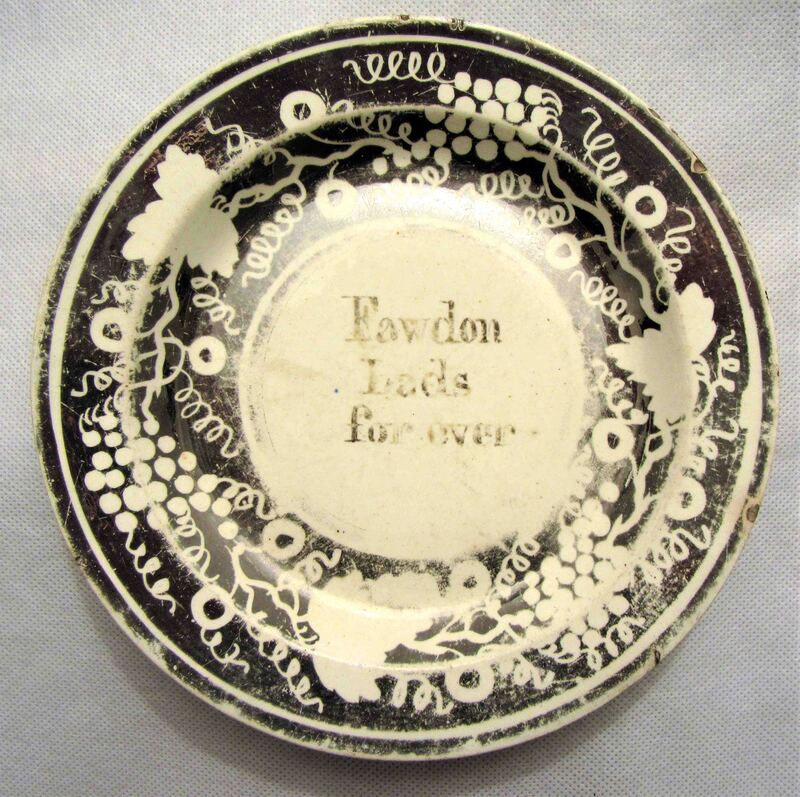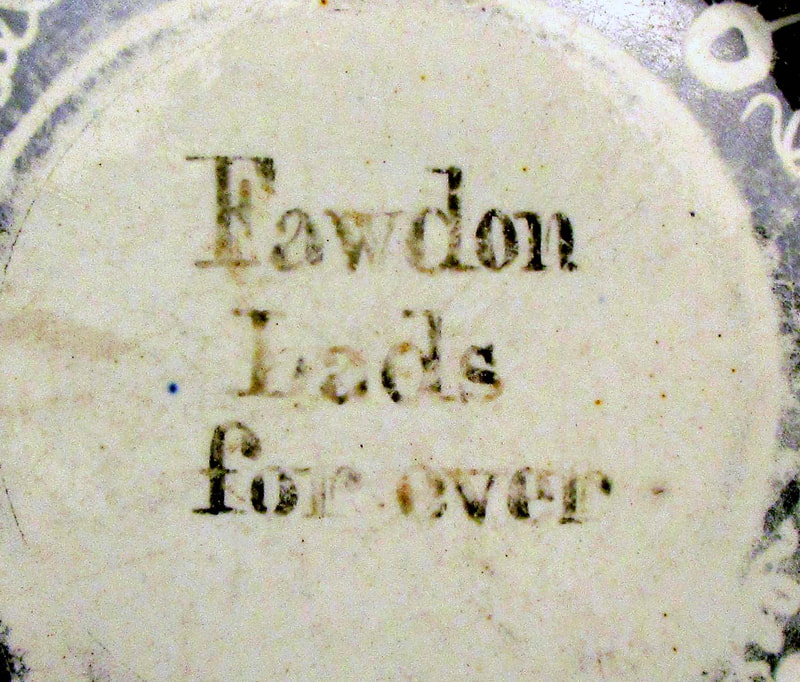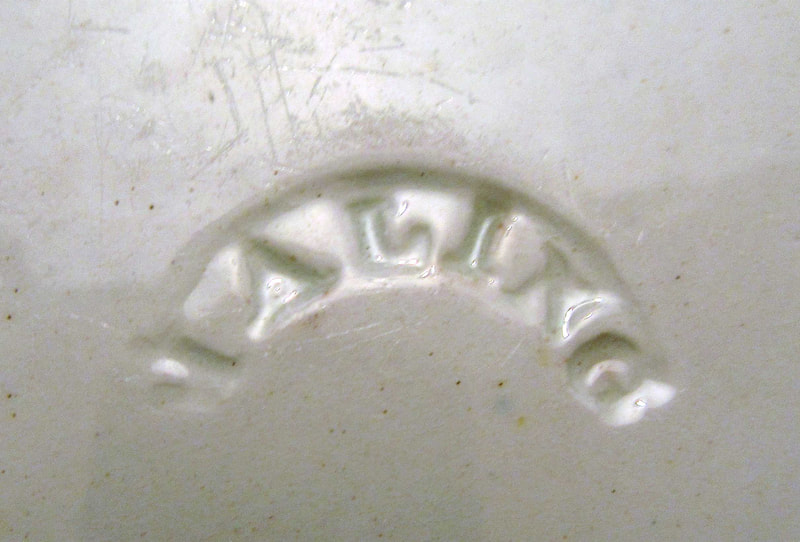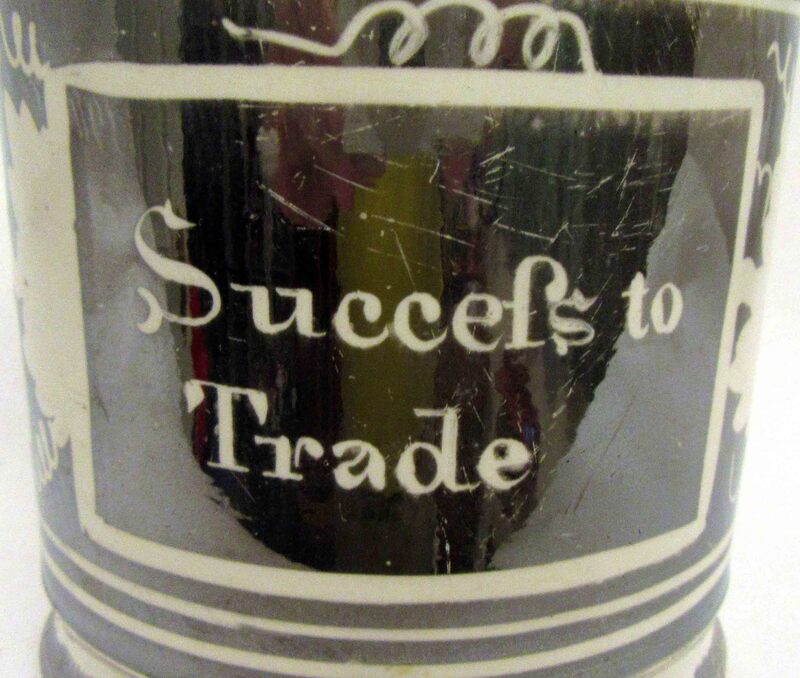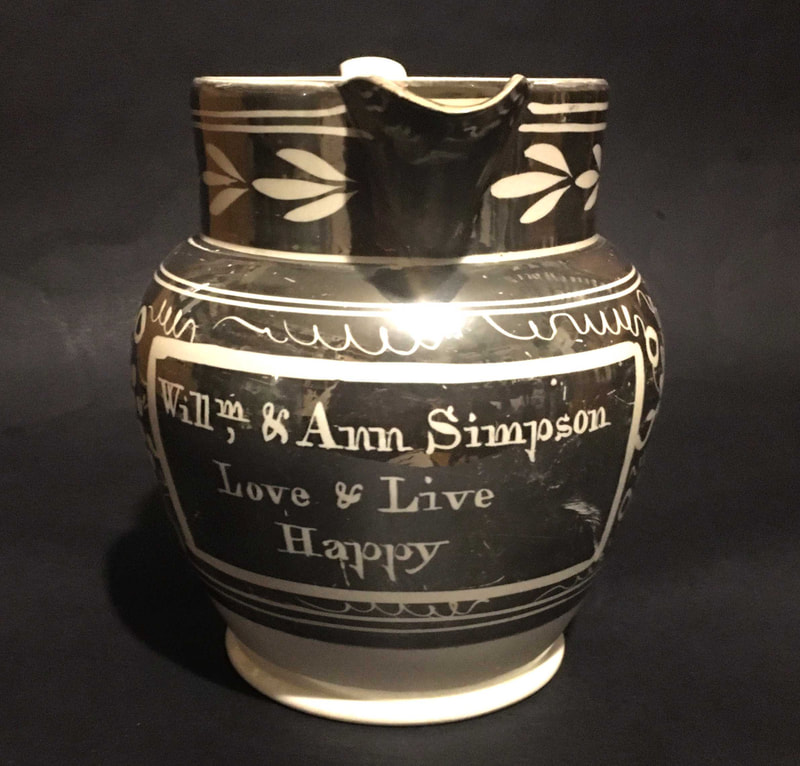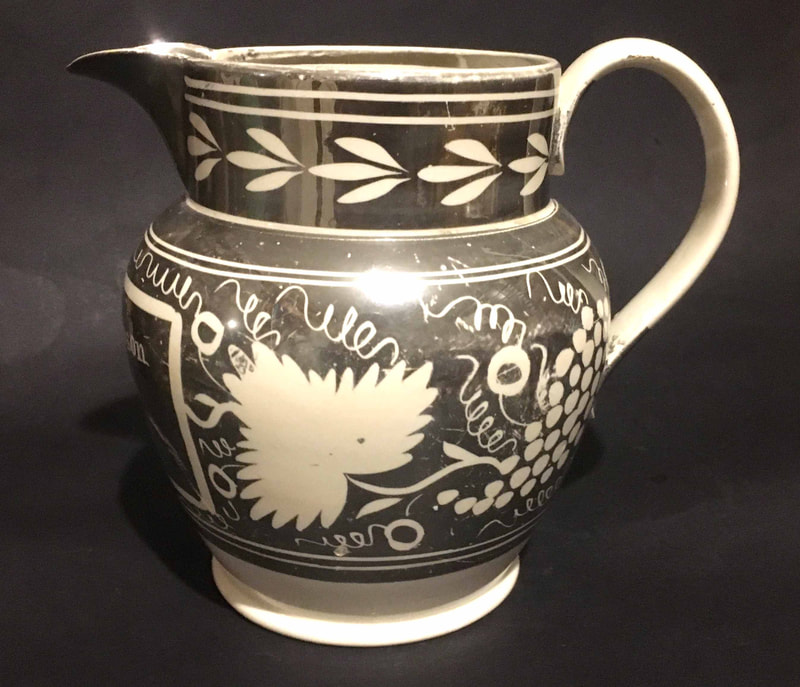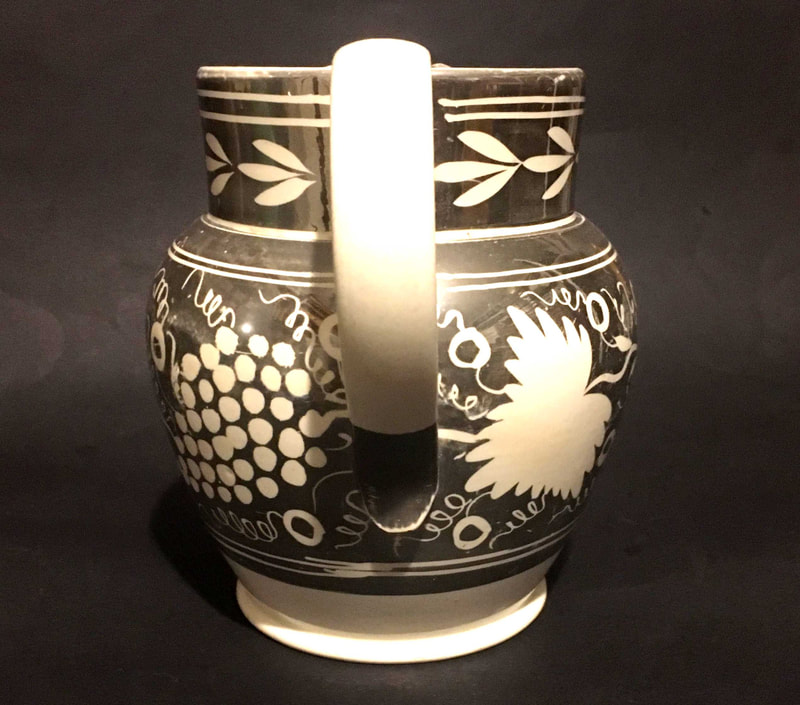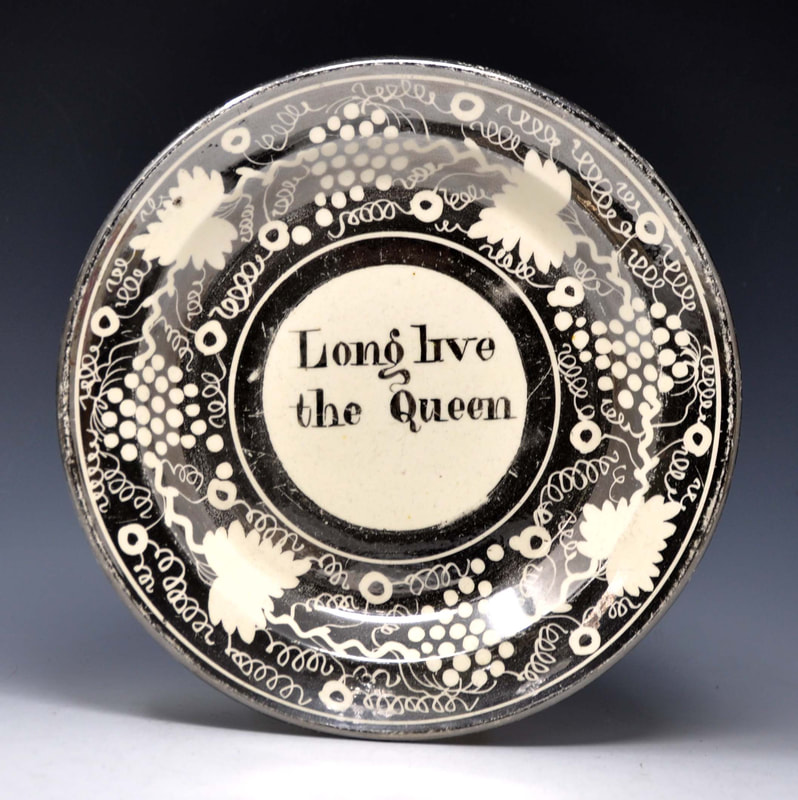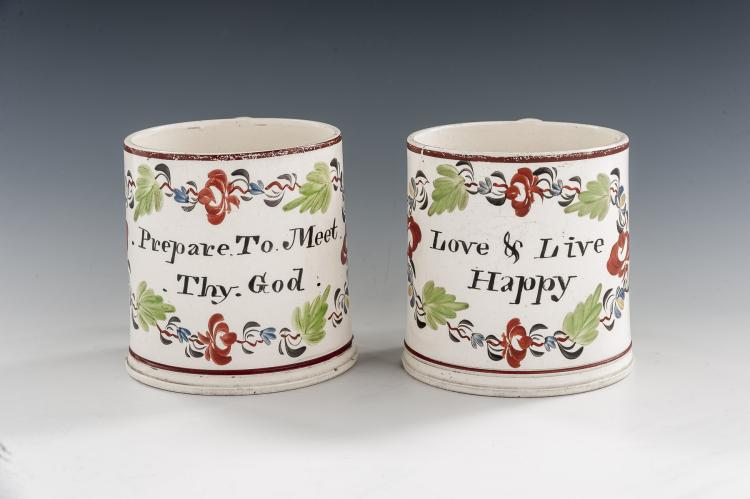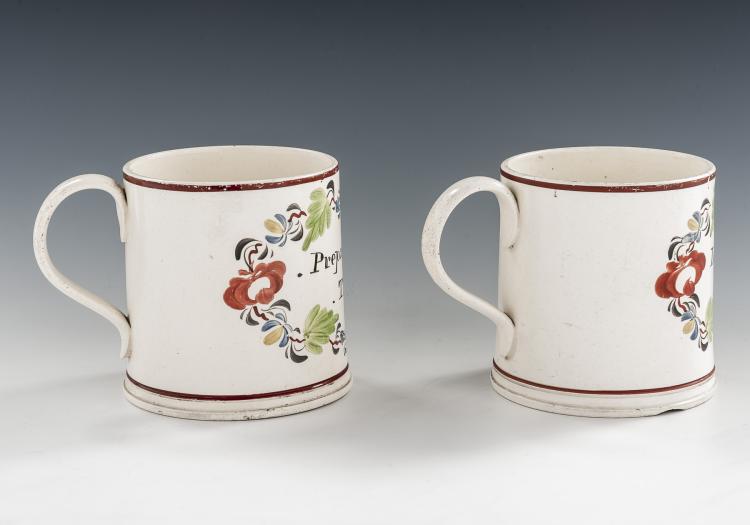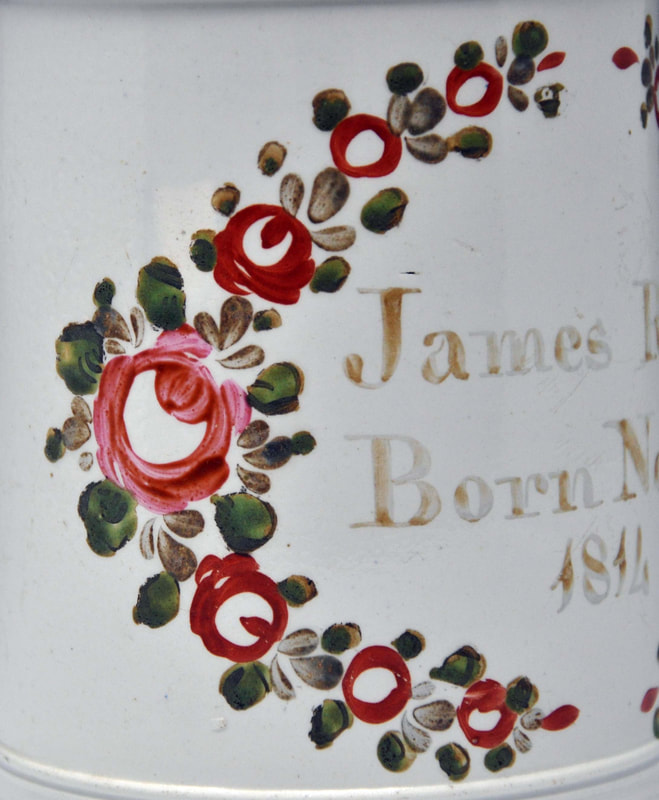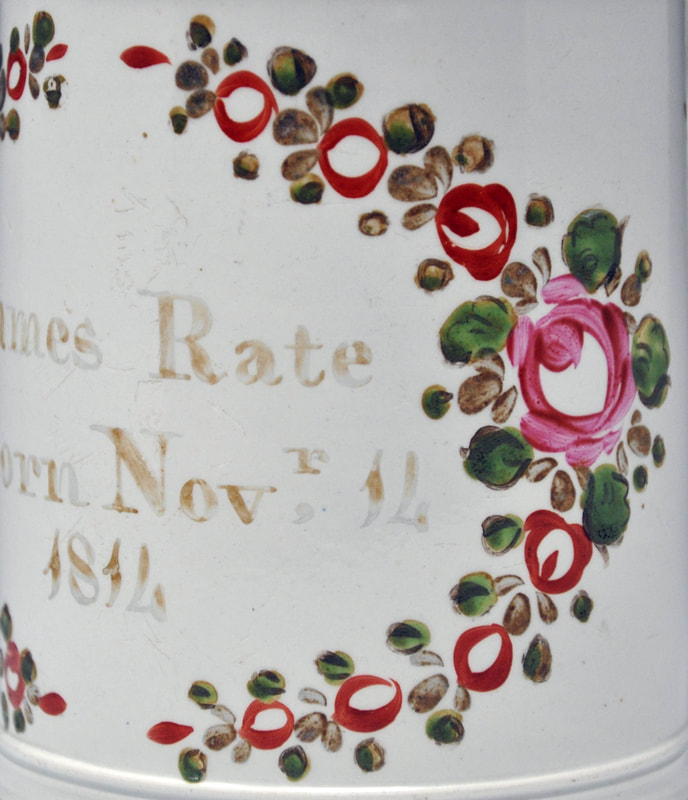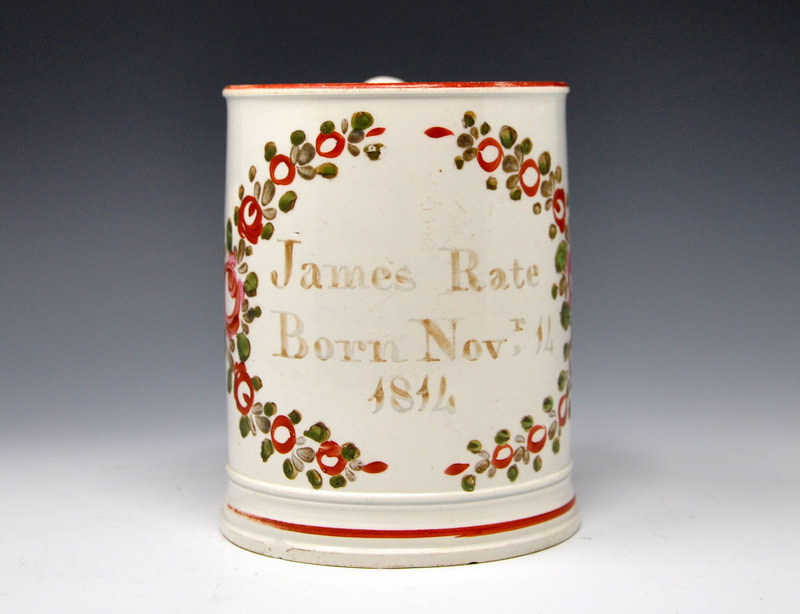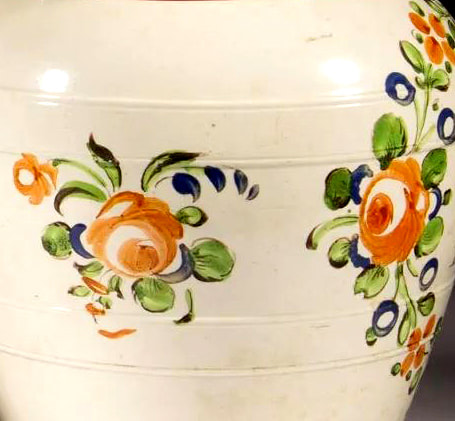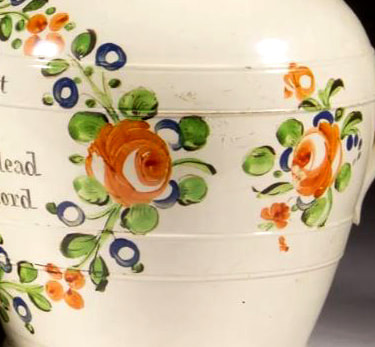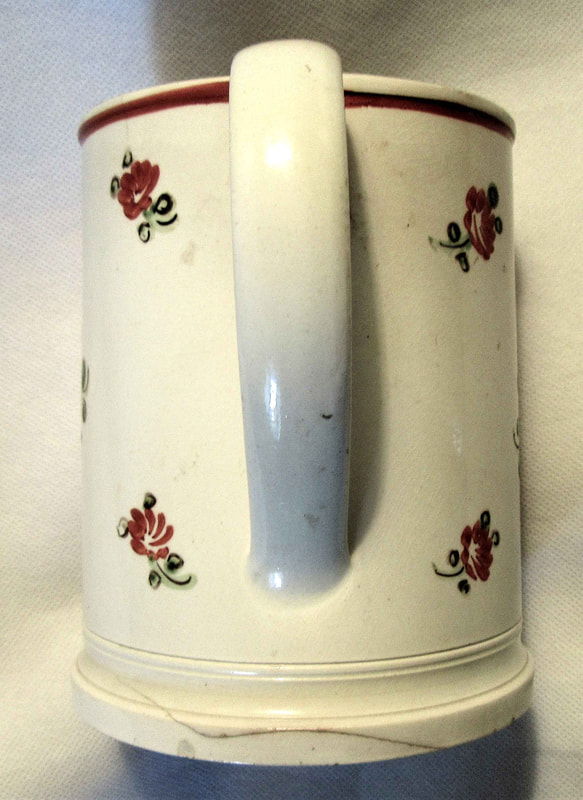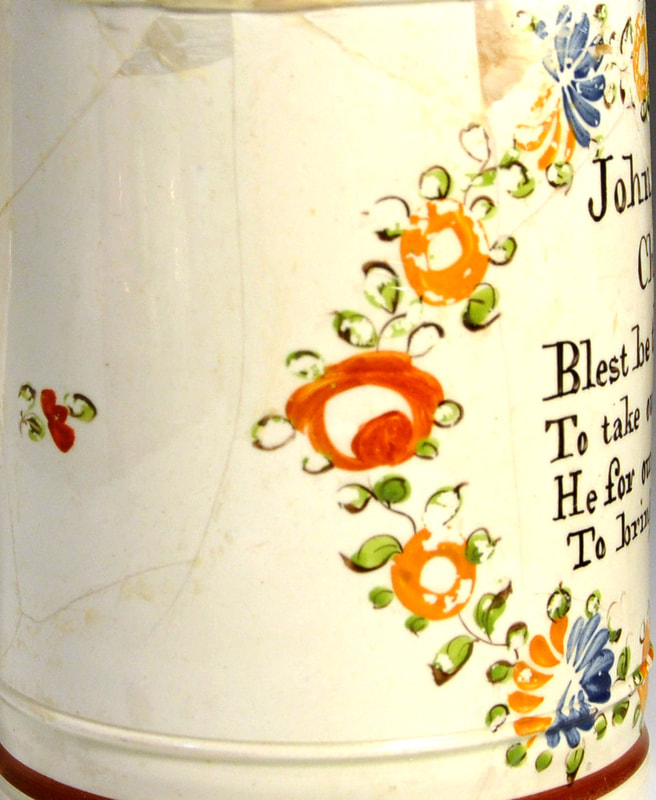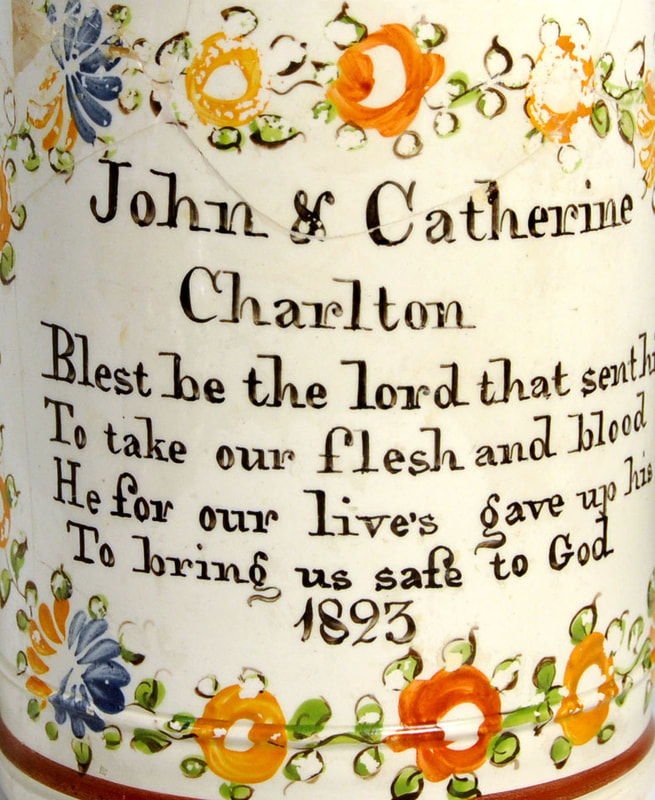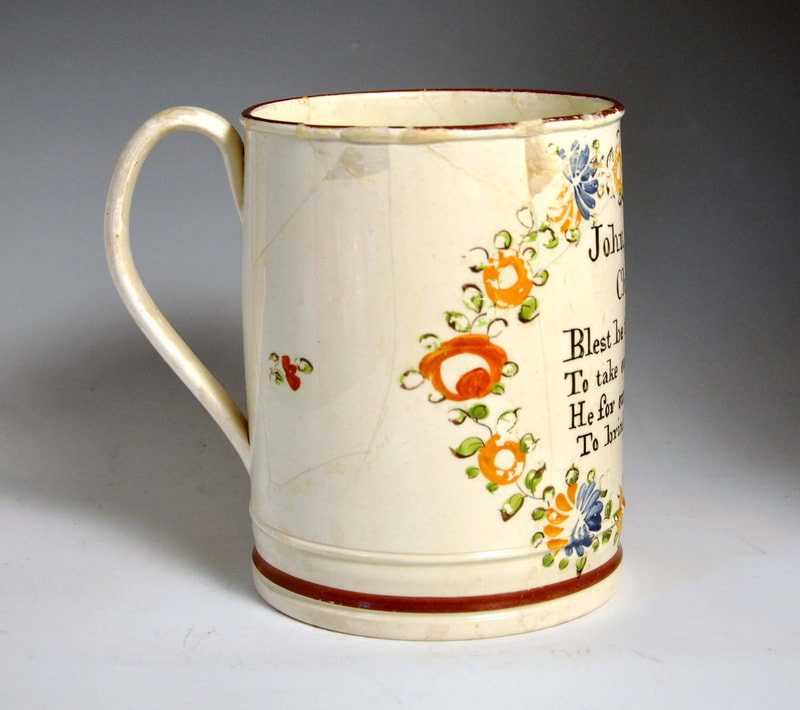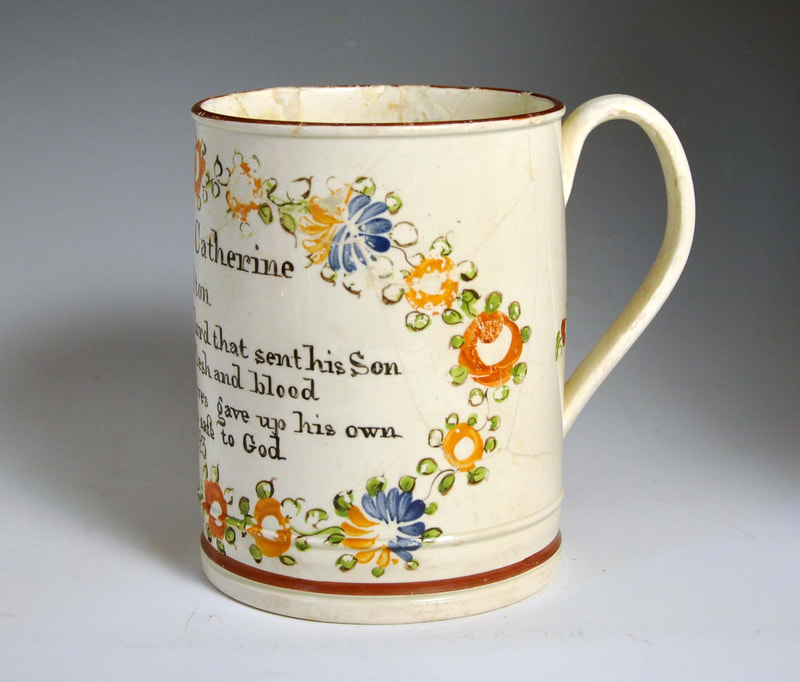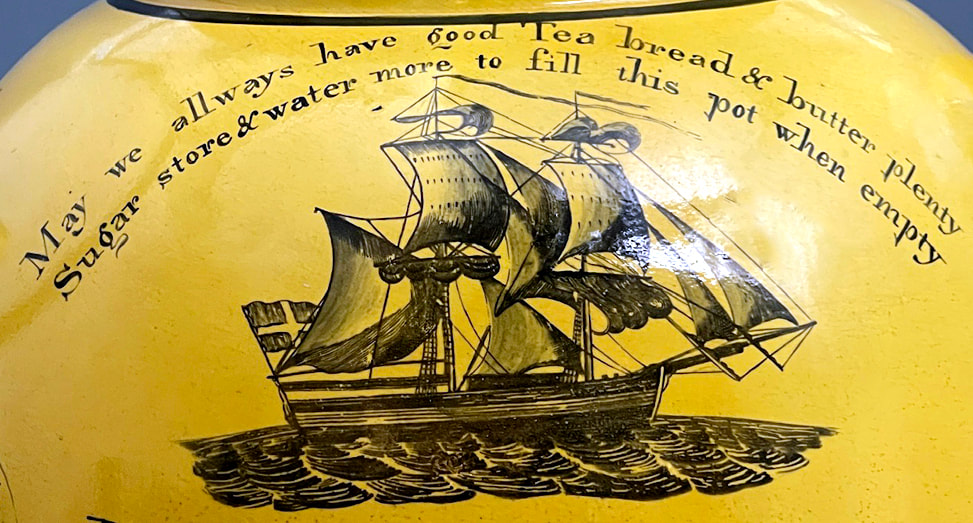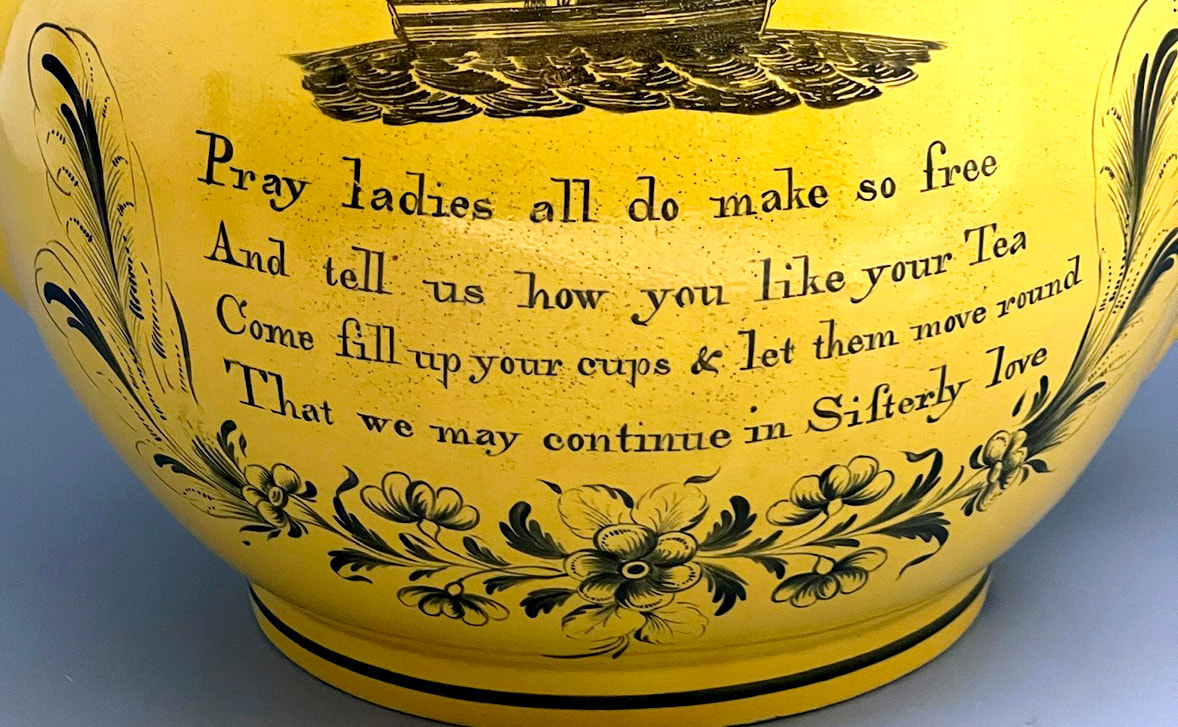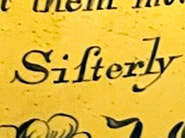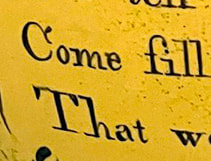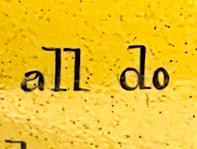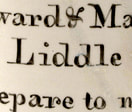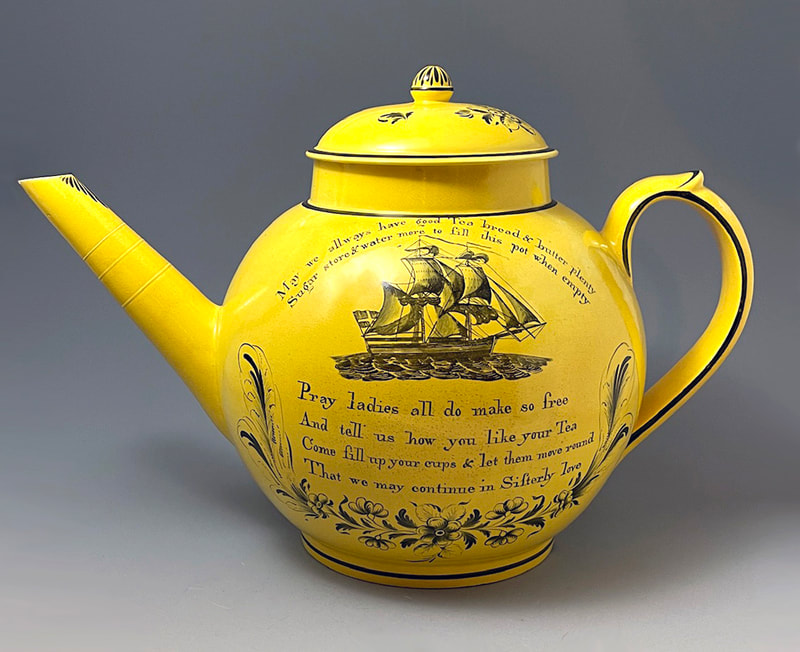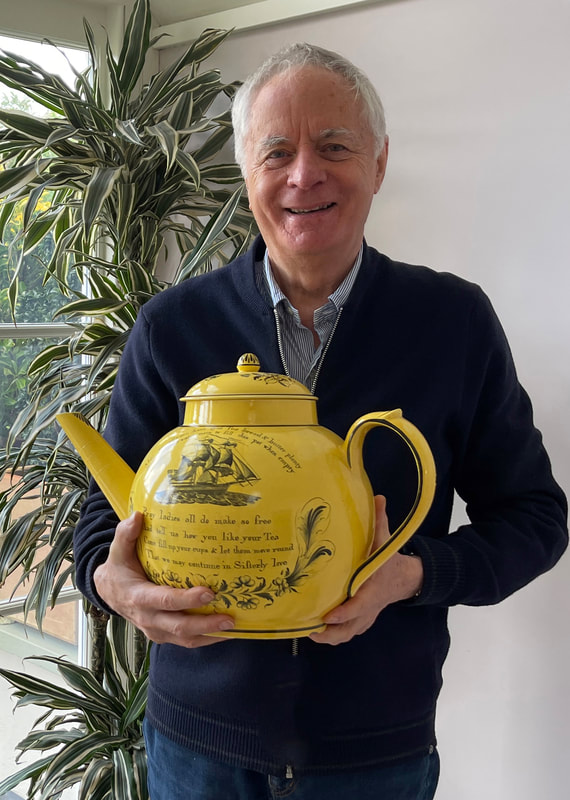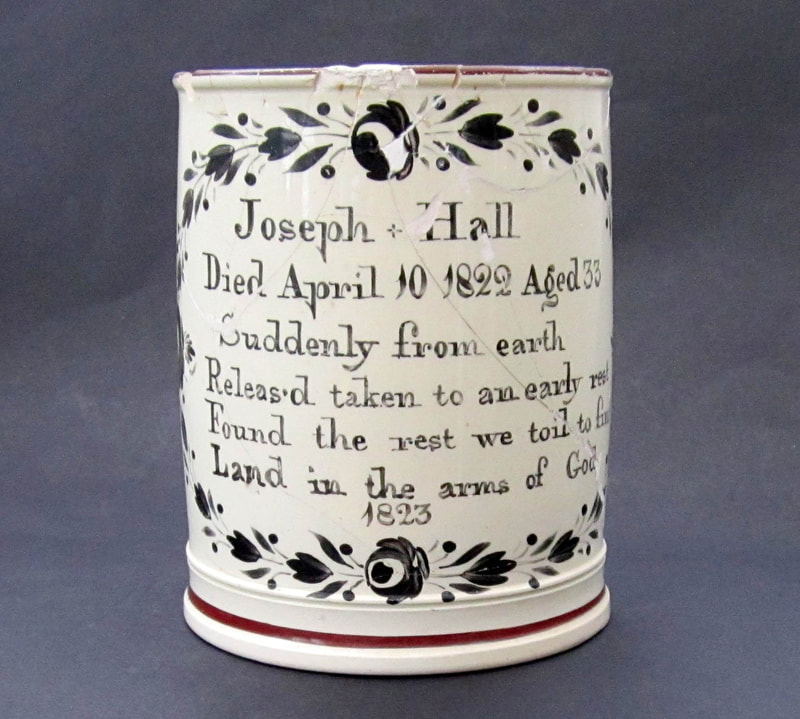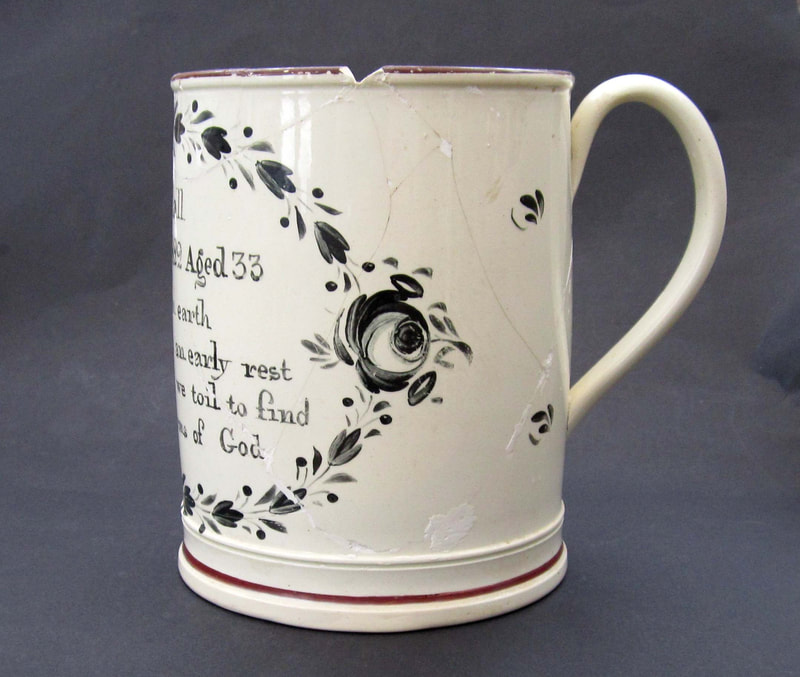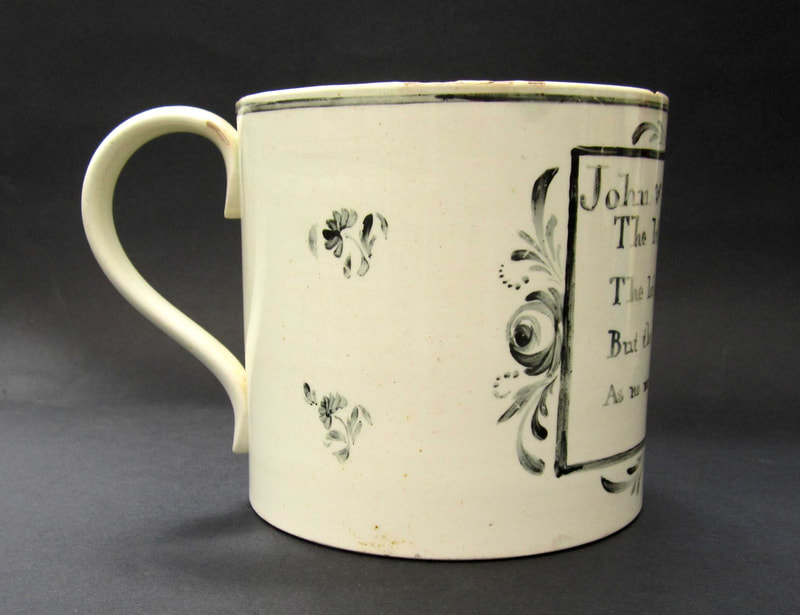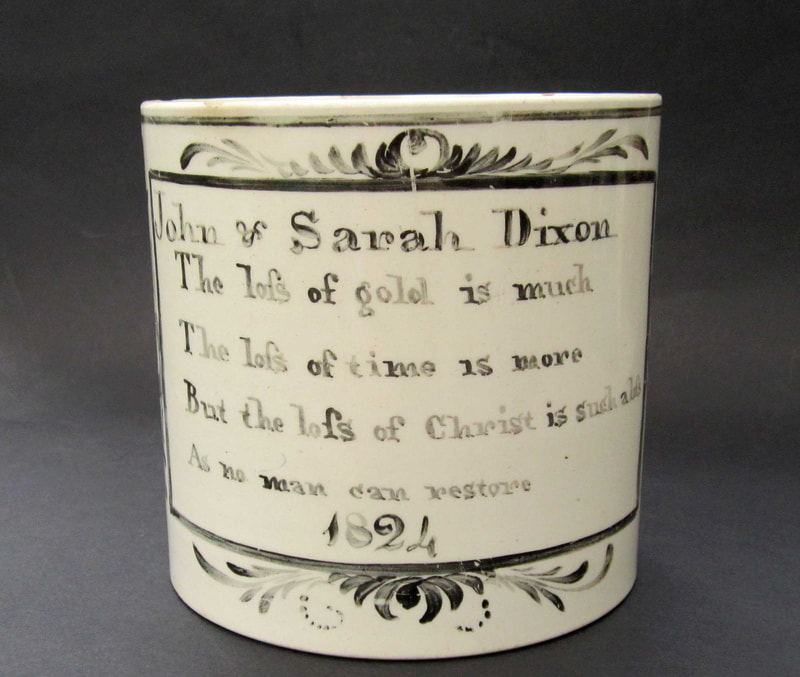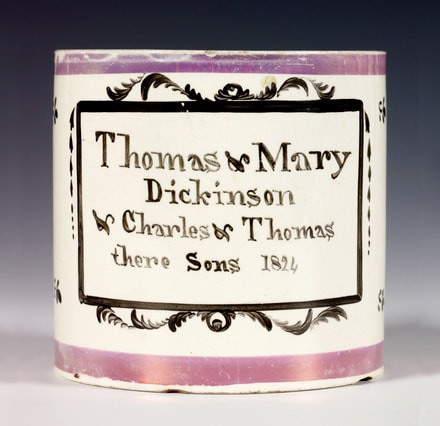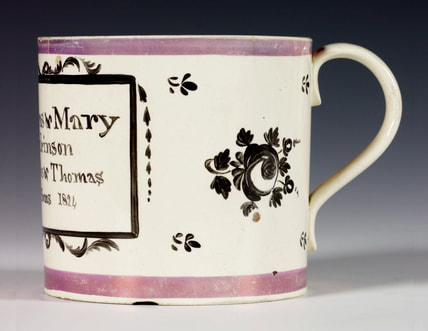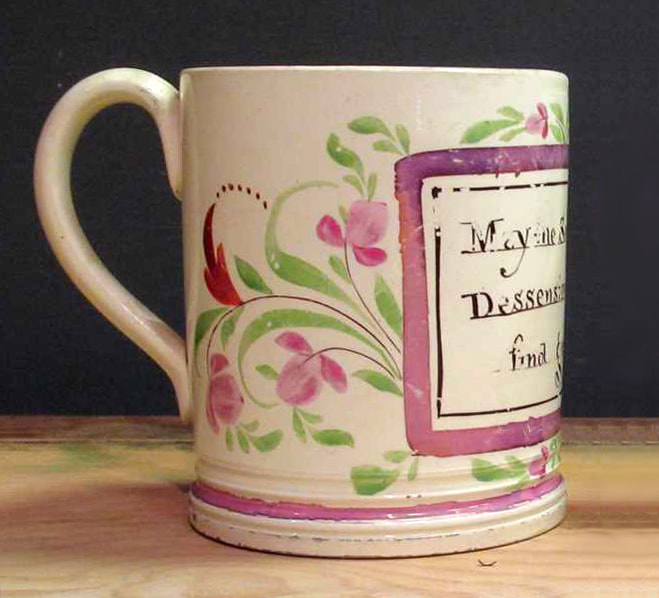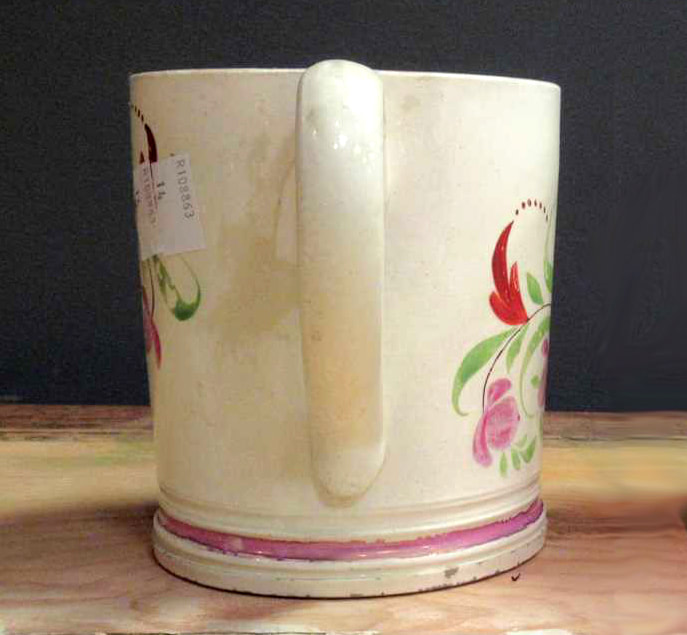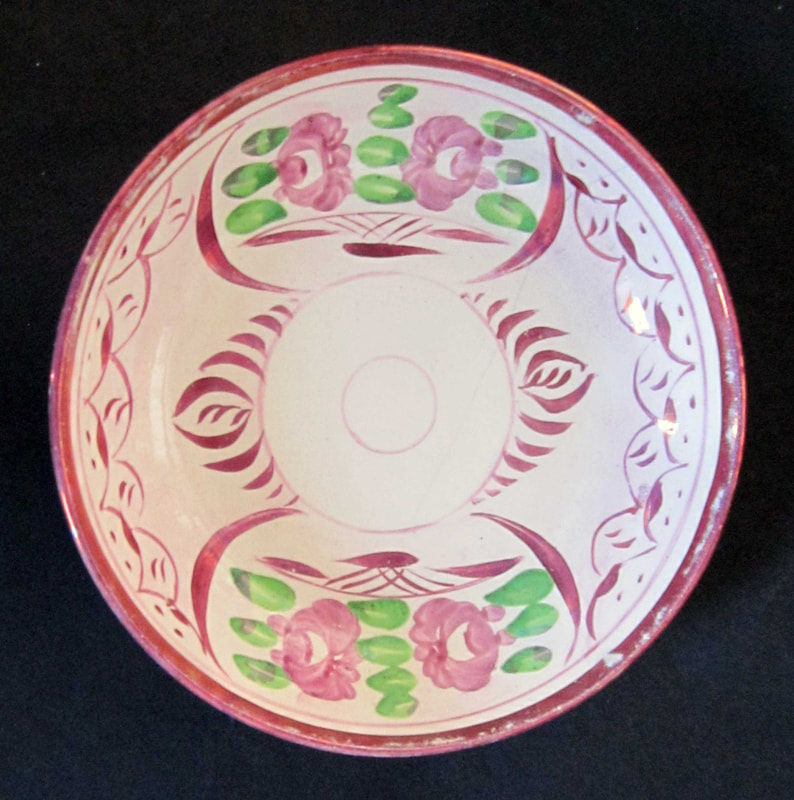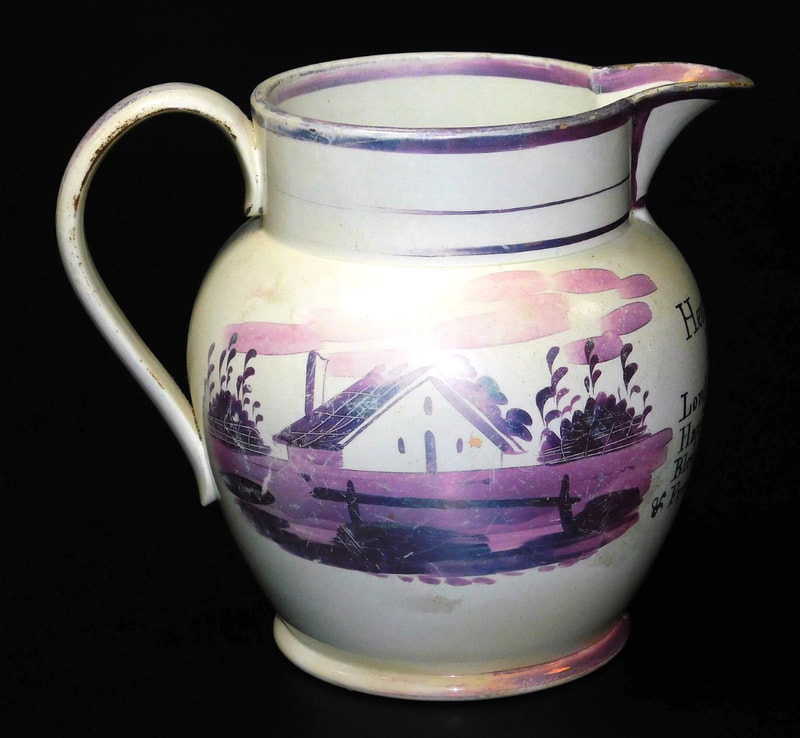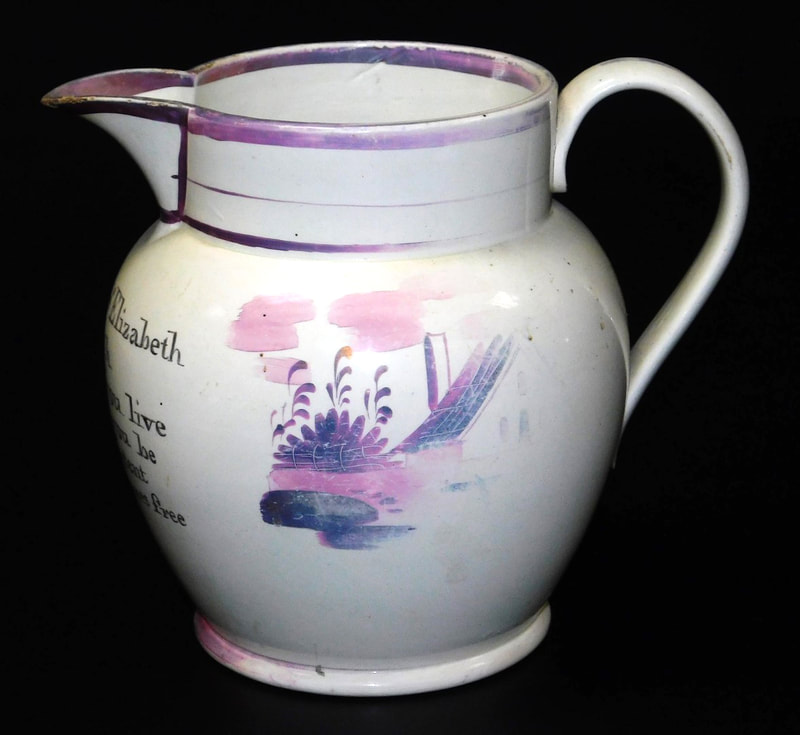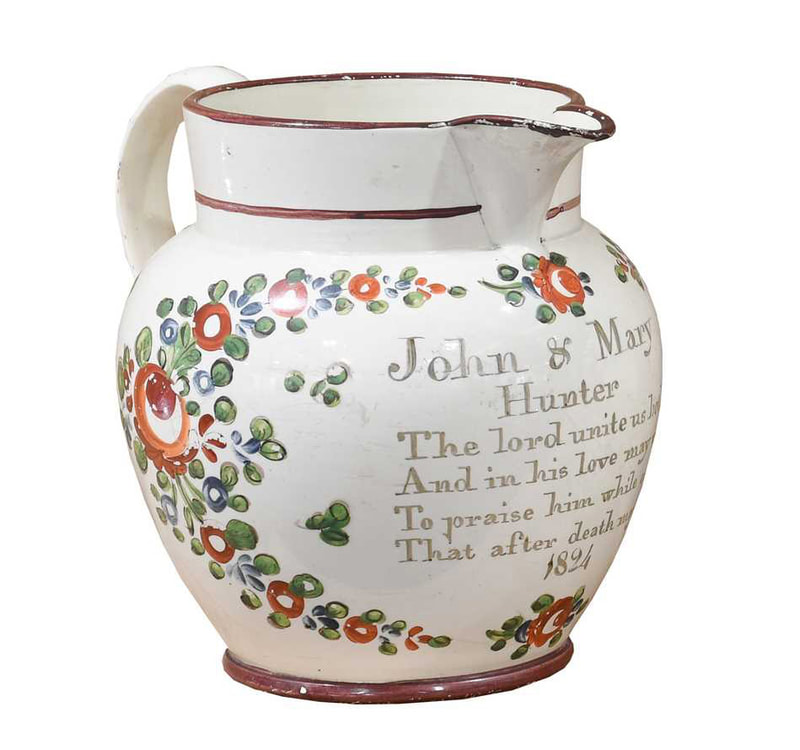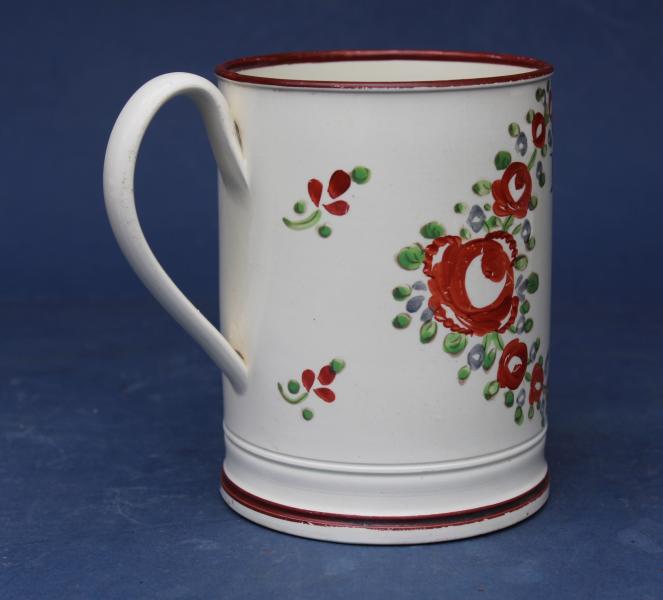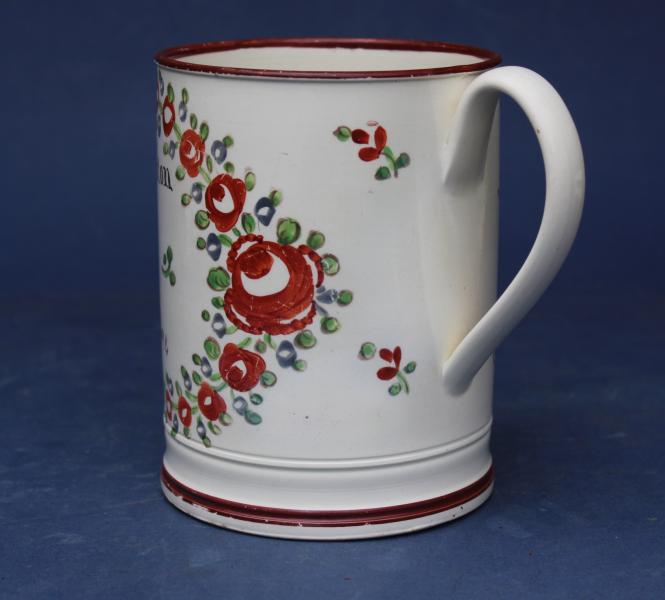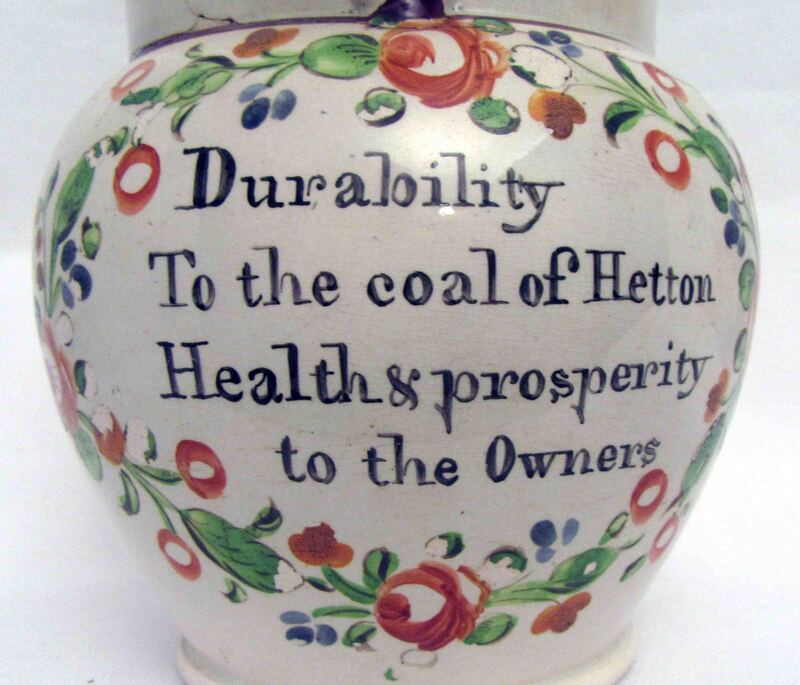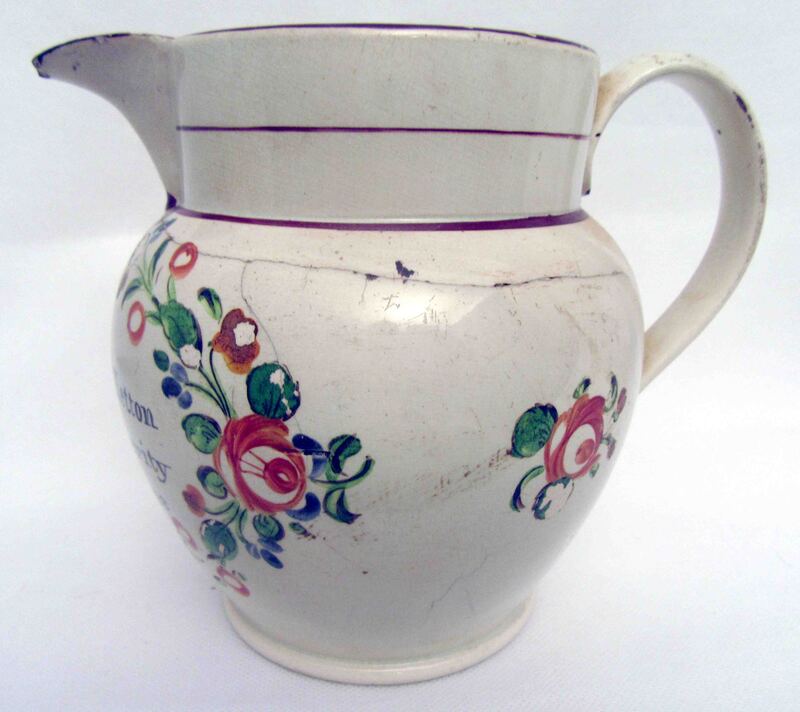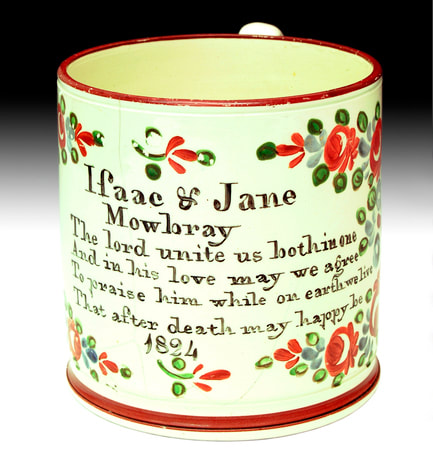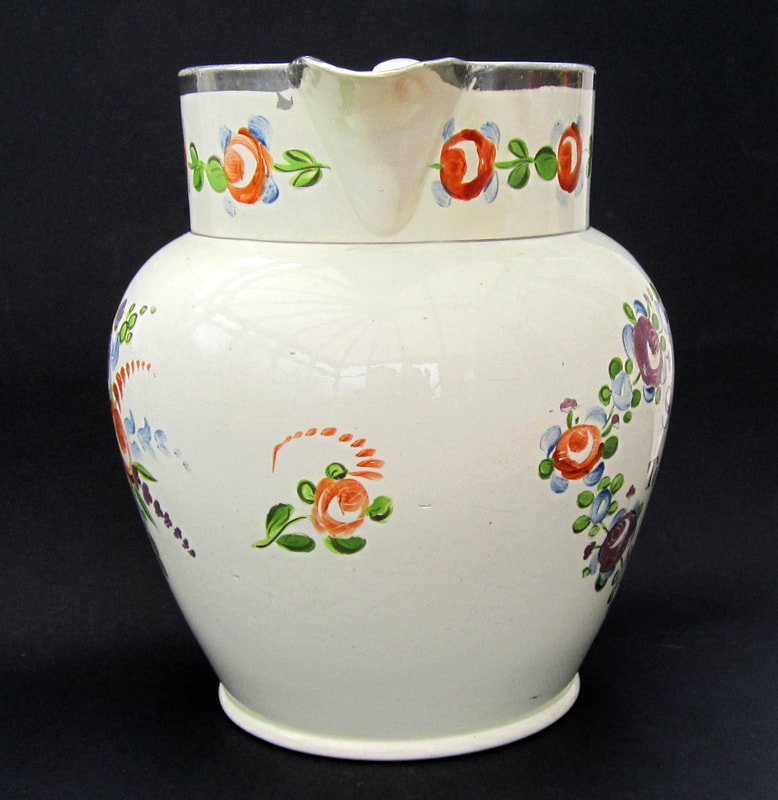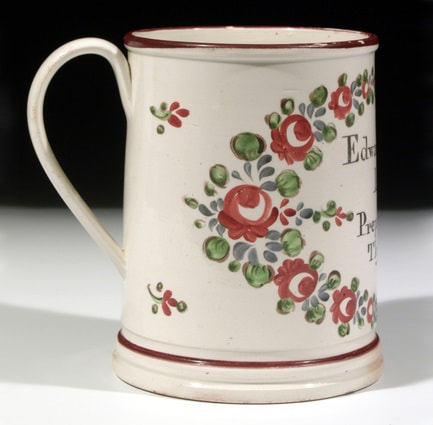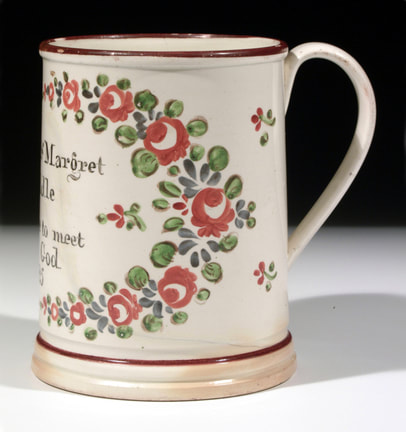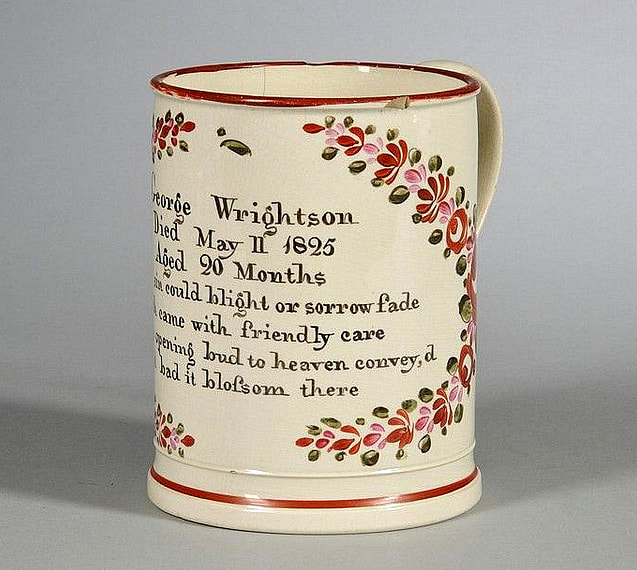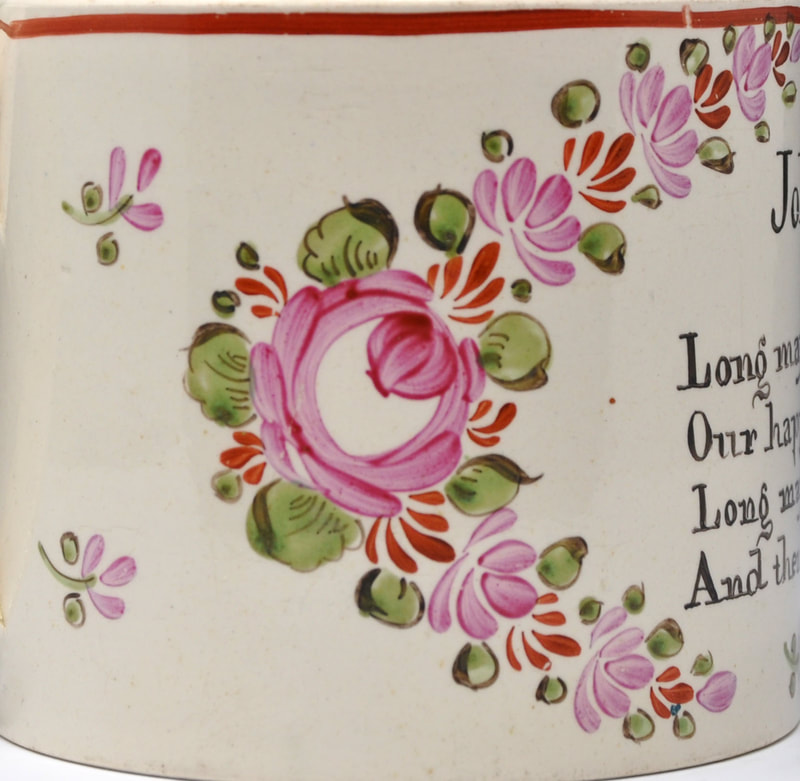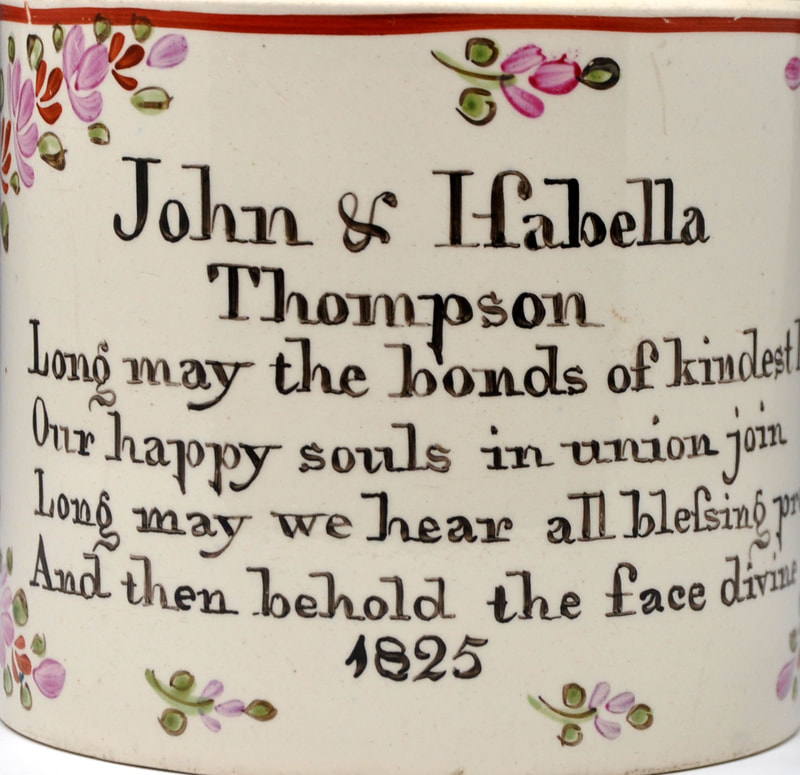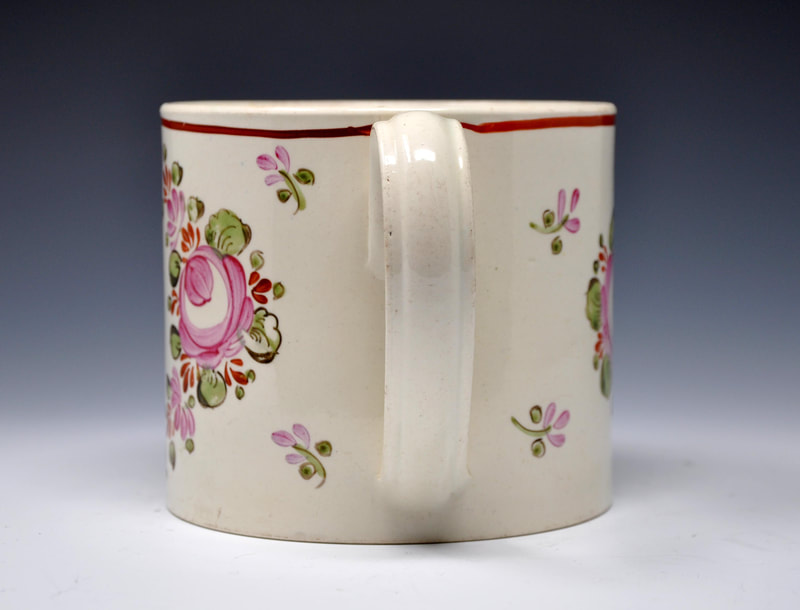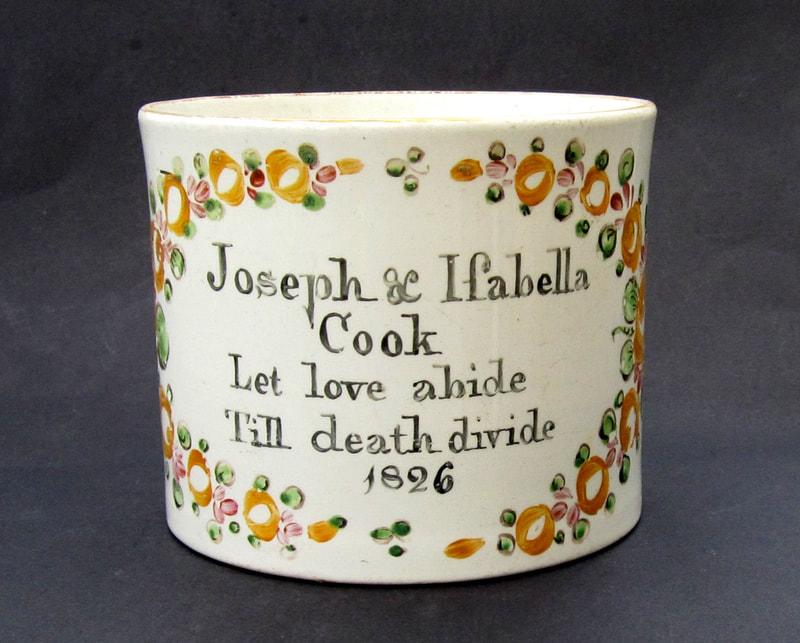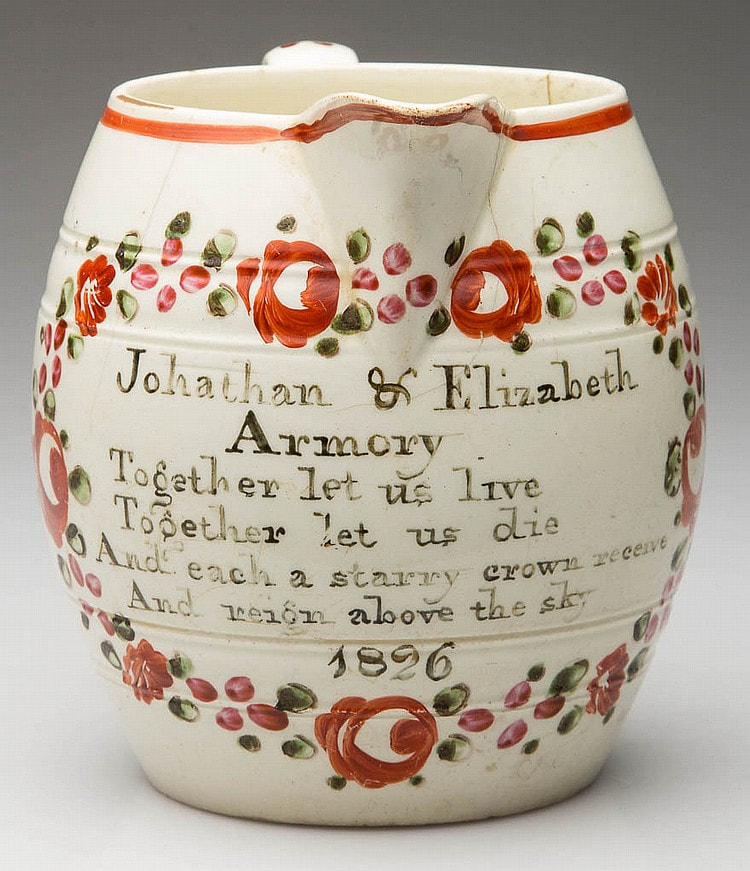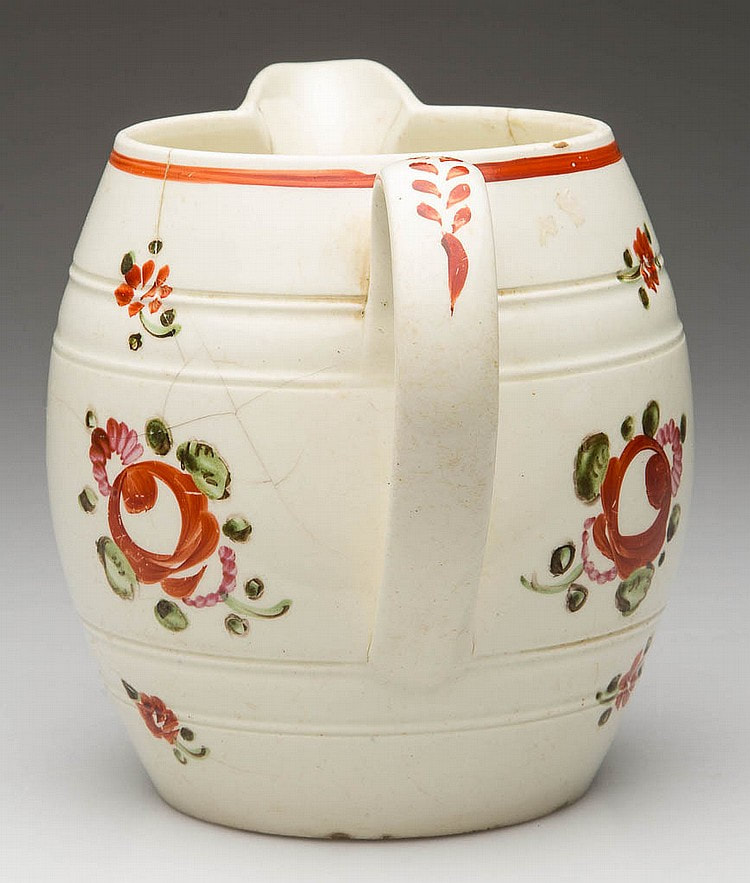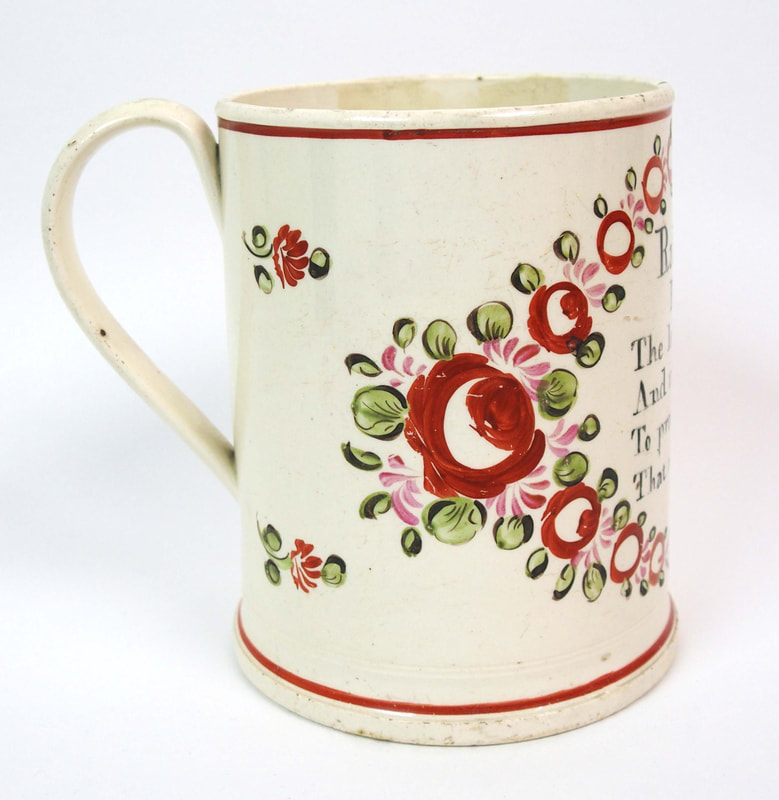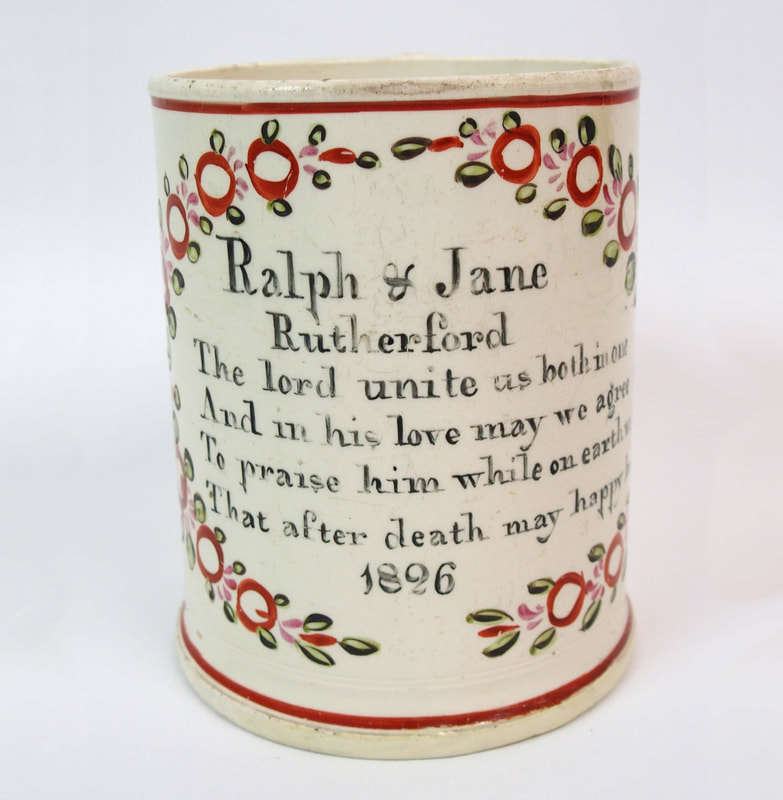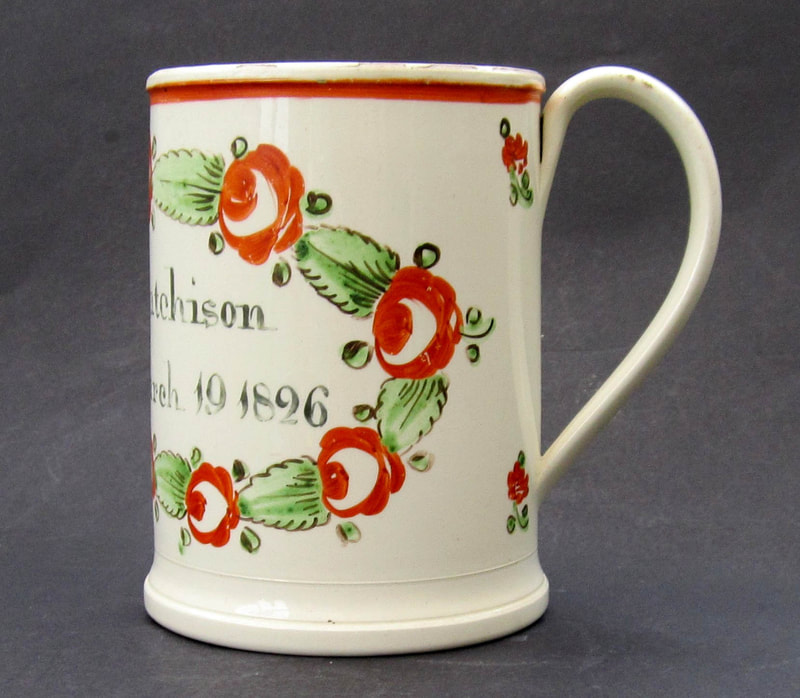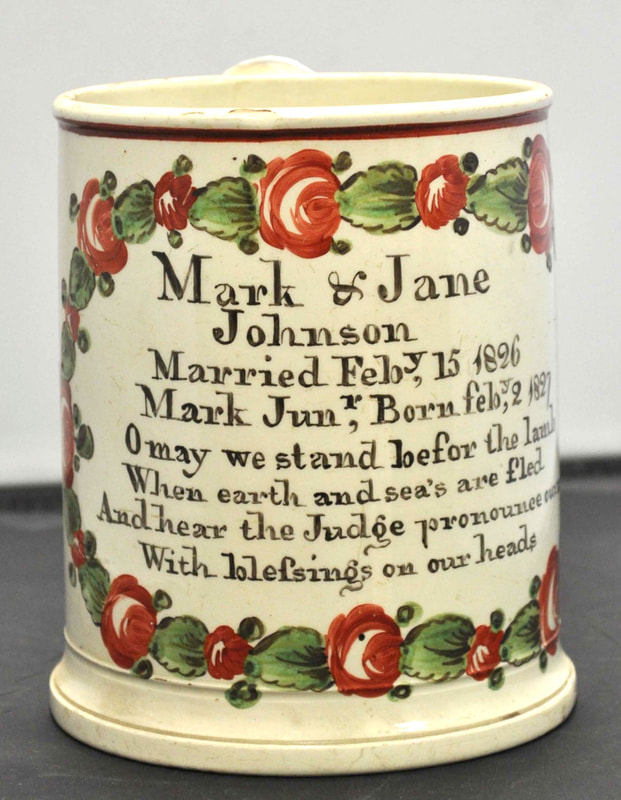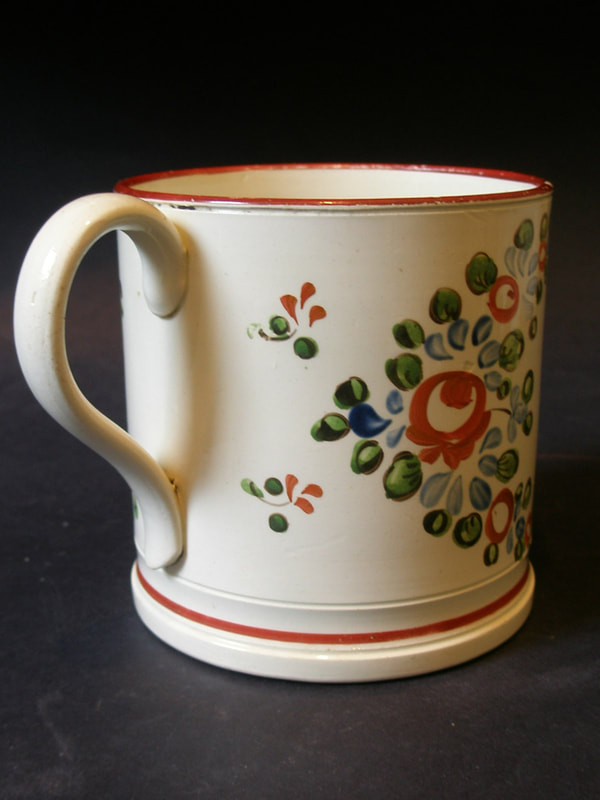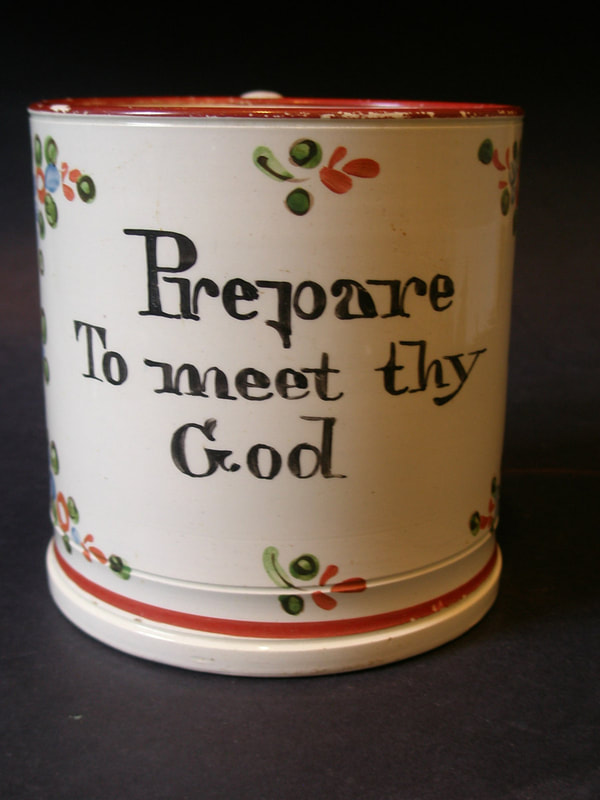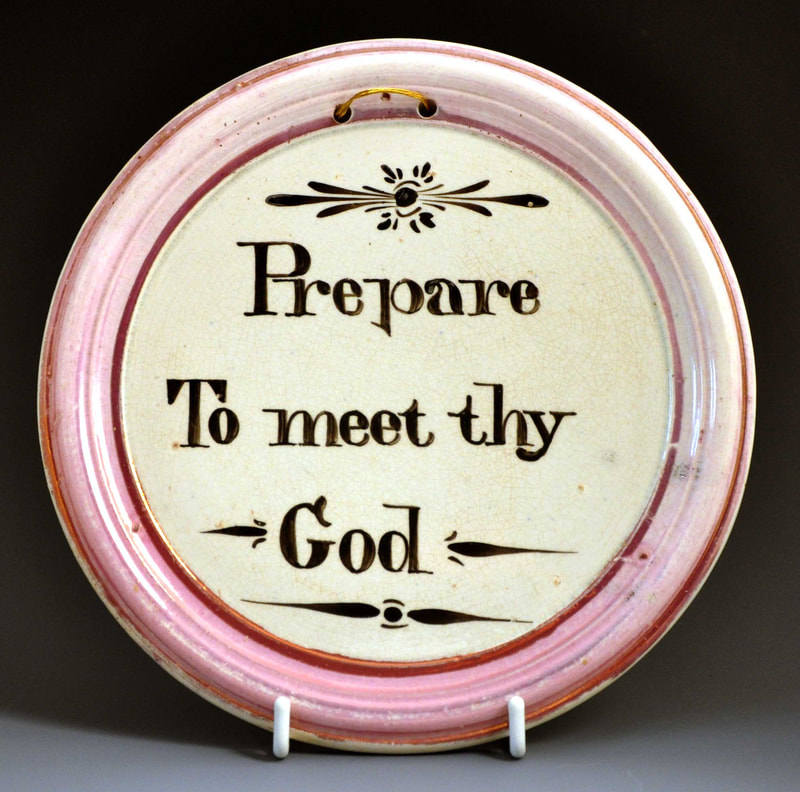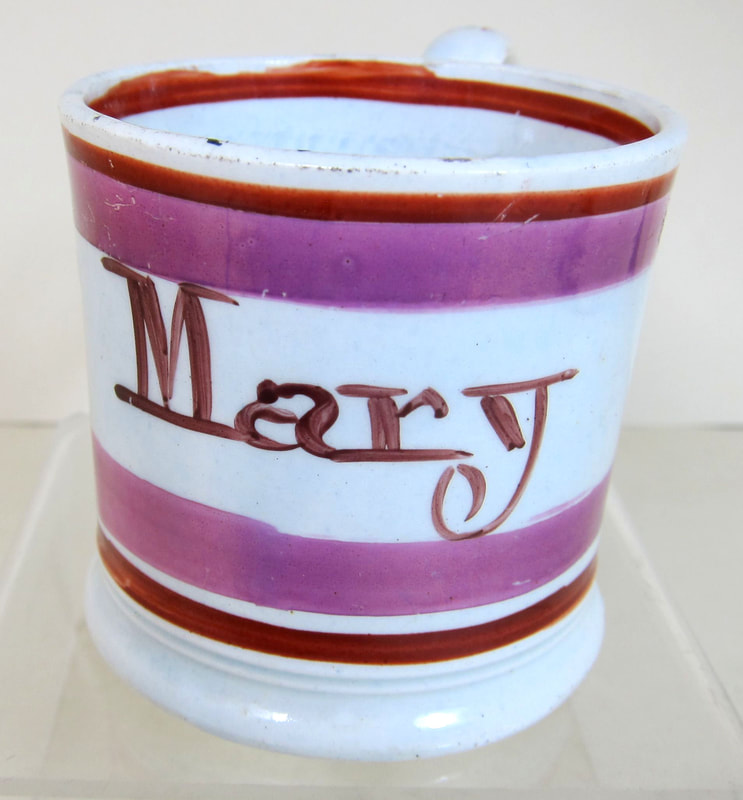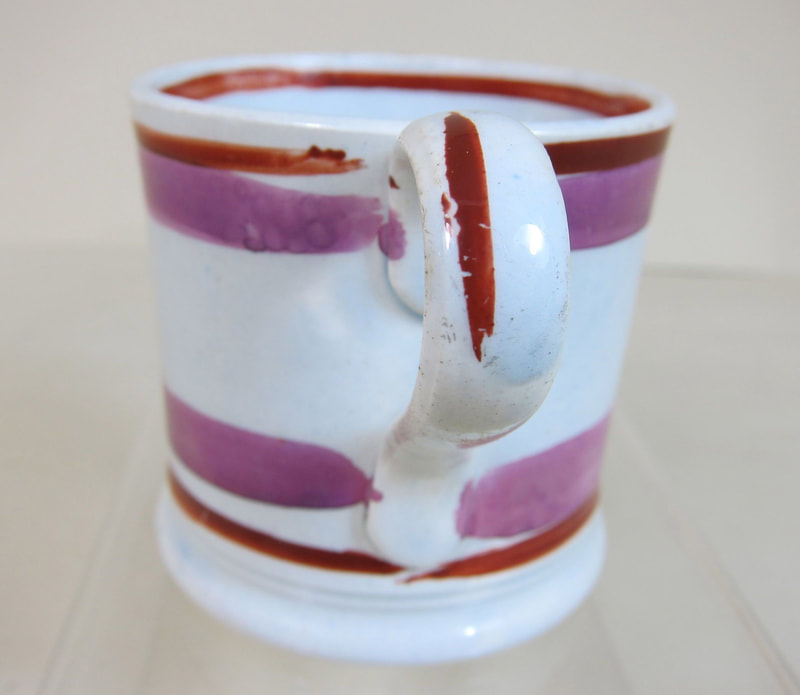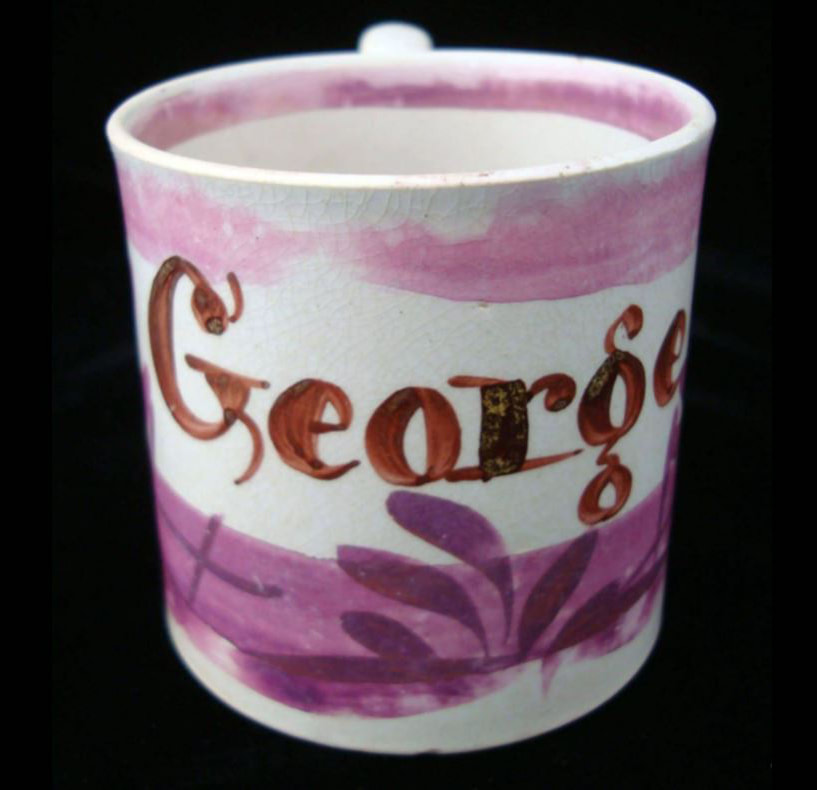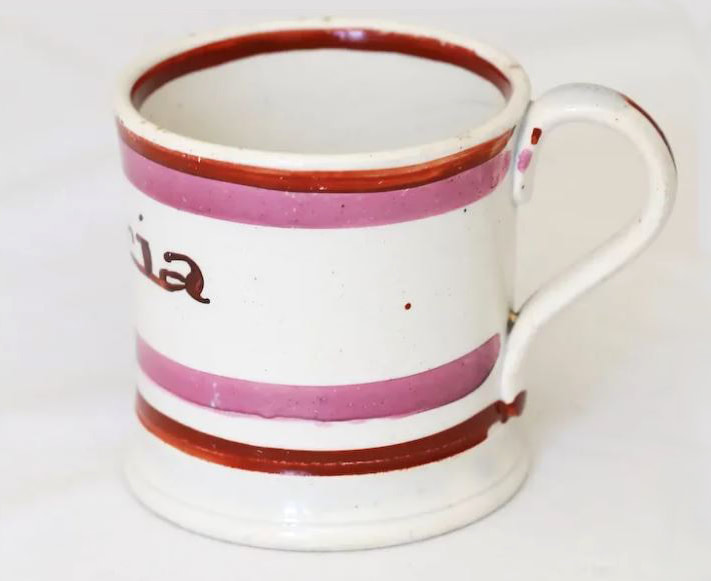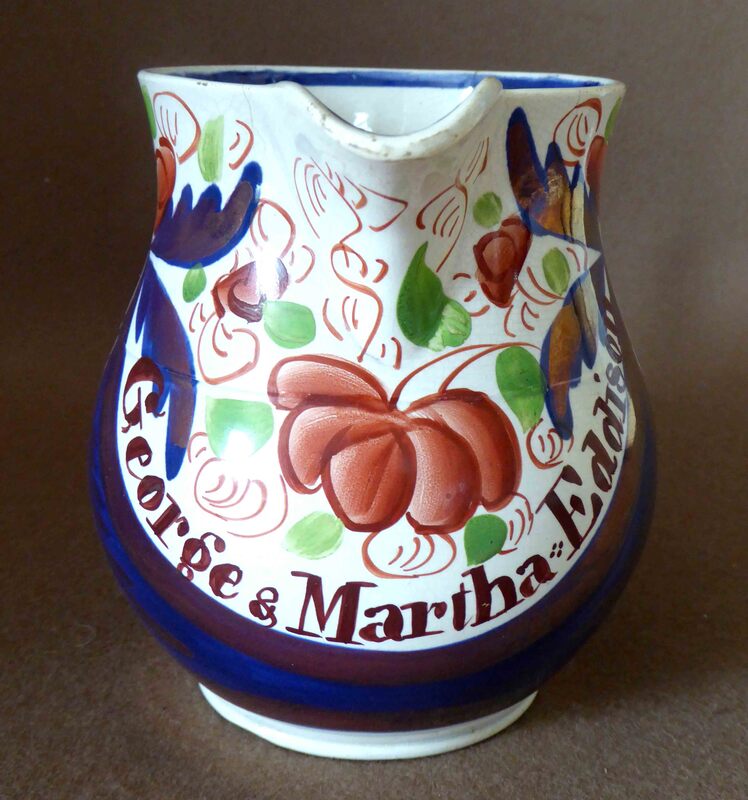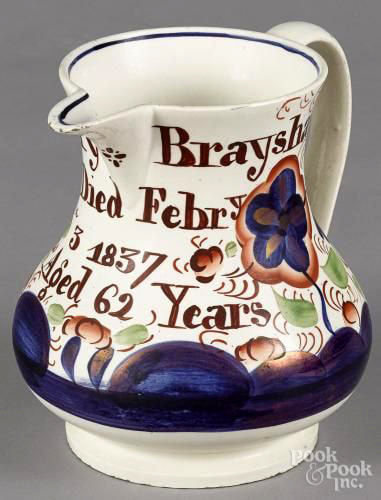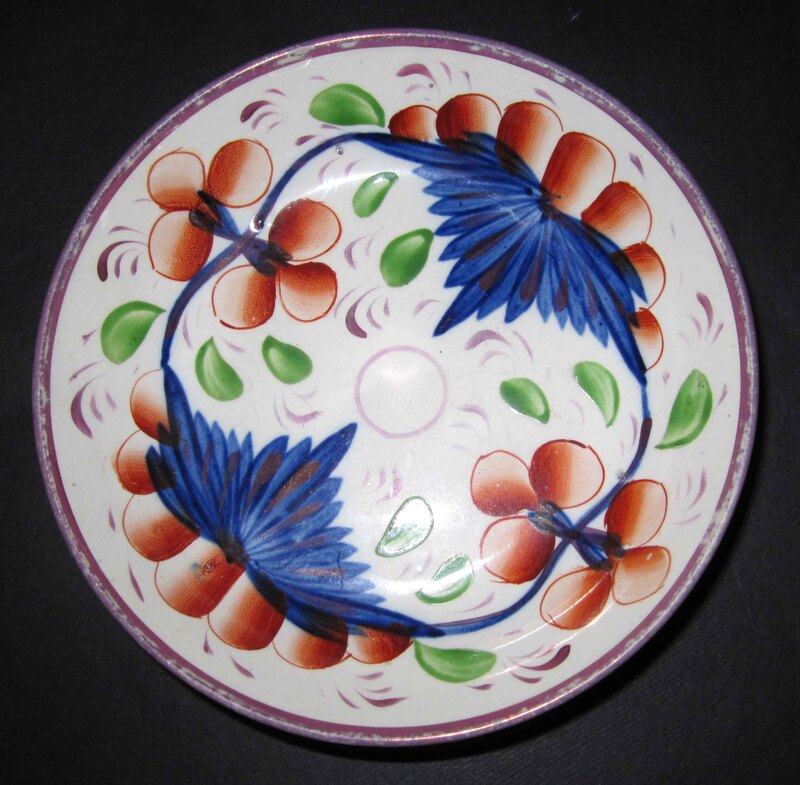North Hylton inscriptions
Robert Maling
Baker states that the North Hylton Pottery was established by William Maling in 1762, as a business interest for his sons Christopher Thompson Maling and John Maling. In about 1797, John's son, Robert (1781-1863), joined the business. In 1815, he transferred the business to Ouseburn Bridge Pottery in Tyneside.
The silver resist plate below has a Maling horseshoe impressed mark. Both Staffordshire and North East potters produced 'silver resist' pottery. I've found unsigned examples from just before 1810 into the early 1820s, so tantalisingly, the undated plate below could have been made at either North Hylton or Ouseburn Bridge.
The silver resist plate below has a Maling horseshoe impressed mark. Both Staffordshire and North East potters produced 'silver resist' pottery. I've found unsigned examples from just before 1810 into the early 1820s, so tantalisingly, the undated plate below could have been made at either North Hylton or Ouseburn Bridge.
The thing strongly in favour of the plate having been made at North Hylton, is that the inscriptions found on these silver resist items (see left below) appear to be by the same hand that enamelled items for Dixon, Austin & Co at that site in the mid 1820s (see right below). So it looks as if the Malings moved, but their enameller stayed behind and made very similar wares for the pottery's new owners.
In the absence of a date, the silver resist items below could belong to either the Maling or Dixon, Austin period. The first two plates below were made in 1820 to commemorate Caroline of Brunswick's return to Britain to assert herself as Queen (George IV wanted a divorce and barred her from the coronation in 1821). The items below aren't marked.
This silver resist mug, although undated, is a strong contender for having been made during the Maling period. Norman Lowe has identified a William Vasey who married Isabella Richardson at Houghton-le-Spring on 23 January 1813.
The only other Maling-impressed piece of pottery I've seen, potentially from Robert Maling's time in North Hylton, is an inscribed plate shown on page 29 of Steven Moore's book, Maling – The Trade Mark of Excellence!, (below left). The hand is similar to the items on this page and never appears on items from the Ouseburn Bridge Pottery, whose inscriptions were entirely different. The two mugs below are unmarked, but included for similarities of decoration.
The mug below with floral enamelling, dated 1814, also appears to be a rare survivor from the Maling period at North Hylton. As with the silver resist, the enameller would continue decorating mugs in this way during the Dixon, Austin period.
Dixon, Austin & Co
When the Malings left, Baker says that the North Hylton Pottery was taken over by John Phillps or his son who already owned the larger Sunderland Pottery (also known as the Garrison Pottery). Adverts in newspapers show that the Dixon, Austin & Co partnership ran from 1818 to 1839 and operated on two sites: 'Sunderland Pottery, in the borough of Sunderland, and also at the Hylton Pottery, in the parish of Monk Wearmouth'. The lower case 't' on the objects on this page is not shaped like a '4'. (Compare with the Dixon Austin items on this page.)
|
The Special Auction Services catalogue describes these mugs as follows: 'Born in 1792 Lambton represented Durham from 1813 until his elevation to the peerage in 1828. He headed the radical wing of the Whigs becoming known as 'Radical Jack' in deference to his refusal to evict his tenants in order to allow open-cast coal mining on his estates. Undoubtedly making him a local hero, it is likely that this pair of tankards were commissioned by the Hunim brothers, as tenants on the occasion of their respective marriages in 1822. There were no elections in Durham between 1815 and 1828.' |
Tennant's Auctioneers provided the following information, starting with the inscription details.
Number 30/Number 28 James & Robert Shields lost Nov 3r 1823 / Be warned then by our sudden call / That you for death prepare / For it will come you know not when / The manner how or where / Joseph & Isabella Watson within a red rose wreath, 14.5cm high
Robert Shields, 30 years old, and James Shields, 28 years old, were killed in the 3rd November 1823 explosion of inflammable air at the Plain Pit of Rainton Colliery, Houghton-le-Spring, belonging to the Marquis of Londonderry. 53 men and boys were killed, and several other seriously hurt, two of whom died later. 12 horses were also killed and the bodies presented a shocking spectacle being burnt and mutilated
Number 30/Number 28 James & Robert Shields lost Nov 3r 1823 / Be warned then by our sudden call / That you for death prepare / For it will come you know not when / The manner how or where / Joseph & Isabella Watson within a red rose wreath, 14.5cm high
Robert Shields, 30 years old, and James Shields, 28 years old, were killed in the 3rd November 1823 explosion of inflammable air at the Plain Pit of Rainton Colliery, Houghton-le-Spring, belonging to the Marquis of Londonderry. 53 men and boys were killed, and several other seriously hurt, two of whom died later. 12 horses were also killed and the bodies presented a shocking spectacle being burnt and mutilated
This monumental teapot shows the capabilities of the potters at North Hylton. I have matched details of the hand-painted text with similar text from the more immediately recognisable North Hylton items on this page. In my view, they are clearly from the same hand.
Compare also the flower painting with that on the mug below. The ship is a hand-painted copy of a Success to the Coal Trade transfer used by the Sunderland Pottery.
An example from the Sunderland Museum & Winter Gardens, Tyne & Wear Archives & Museums collection, which shows Dixon Austin & Co were making items of pink lustreware on this site from the 1820s.
The mug below is attributed to North Hylton on the basis of similarity of the text, which, like the mugs above, is framed within a rectangular border. Beneath it, a Dixon Austin impressed saucer with similar green and pink enamelling.
A cottage ware jug with an inscription in the same hand, also dated 1824.
Two mugs below dated 1825 from the Sunderland Museum & Winter Gardens, Tyne & Wear Archives & Museums collection, and another similar with pink flowers.
Interestingly, the mug below has 'Easington Lane' (a village in the borough of Sunderland) painted on its base. As ever, I'm grateful to Norman Lowe for the following information. 'If 1778 is the true birth year for the Michael mentioned on the mug the only recorded birth in England is from Ovingham Northumberland where a Michael Soulsby was christened on 20 September 1778.' However, Norman did identify a link of the name to Easington Lane. 'A Michael Soulsby is recorded as living at South Hetton, near Easington Lane in 1844 when a son also called Michael was christened there on 24 July 1844. According to the 1851 census the family was then living at Houghton le Spring and Michael senior’s birth date was given as 1798 at Brickgarth, Durham.' So it is just possible that there were three generations of Michael Soulsbys with a connection to Easington Lane.
A pair of marriage mugs with different verses and an inscription for 1825.
Thanks again to Norman Lowe who has tracked down John Scott's christening and burial records.
|
Name: John Scott
Birth Date: 20 Jun 1803 Father's Name: William Scott Mother's Name: Mary Ord Event Type: Christening Event Date: 21 Aug 1803 Event Place: Heworth, Durham, England, United Kingdom |
Name: John Scott
Sex: Male Age: 24 years Birth Year: (Estimated) 1803 Residence Place: High Downs Event Type: Burial Event Date: 11 March 1827 Event Place: Houghton-le-Spring, Durham |
The plaque below has a Dixon, Austin & Co mark, and likely dates from circa 1830. As discussed above, the Sunderland Pottery was then run by Dixon Austin & Co on two sites. This plaque was enamelled at North Hylton. Note that unlike Garrison Pottery items with inscriptions, the lower case 't' does not resemble a number '4'.
The plaque below also has the Dixon, Austin & Co impress. Note that unlike Garrison Pottery items, the lower case 'L' is not crossed.
I am very grateful to Alex Thirlaway, as much for the plaque's history as the photos. The Mills family were Newcastle based and ship owners. His grandmother had 15 plaques (rectangular and circular) for various family members between 1799 to 1838. The oldest was an oval plaque dated 1799 (or thereabouts) with 'a female classical figure above a rectangular raised cartouche with a man's name and dates on it'. Alex's grandmother, who was 'a terrible chucker-outer', gave all of them except the plaque below to a rag and bone man in 1978! So if you have a plaque with a 'Mills' inscription, we would love to hear from you. Although dated 1802, the plaque was likely made c1830, perhaps to fill a gap in the family tree.
I am very grateful to Alex Thirlaway, as much for the plaque's history as the photos. The Mills family were Newcastle based and ship owners. His grandmother had 15 plaques (rectangular and circular) for various family members between 1799 to 1838. The oldest was an oval plaque dated 1799 (or thereabouts) with 'a female classical figure above a rectangular raised cartouche with a man's name and dates on it'. Alex's grandmother, who was 'a terrible chucker-outer', gave all of them except the plaque below to a rag and bone man in 1978! So if you have a plaque with a 'Mills' inscription, we would love to hear from you. Although dated 1802, the plaque was likely made c1830, perhaps to fill a gap in the family tree.
Similar later items
This unattributed mug, from the Sunderland Museum & Winter Gardens, Tyne & Wear Archives & Museums collection, has similar lettering to the items above. Compare the lower case 'r', in particular, with the mug above. Interestingly, the mug below has the grape vine decoration found on the earlier silver resist items at the top of this page.
The small mugs below are more loosely decorated but have letters are formed in a very similar way to the mug above, in brick-red enamel.
Below, four Gaudy Welsh jugs painted in the same hand and brick-red text as the Rayner mug above. Norman Lowe has done some research into the inscriptions on these and similar items, and they tend to relate to Yorkshire or Lancashire folk. So it is possible/likely that these items were in fact made by a Yorkshire pottery.
However, some evidence below, from Norman Lowe's collection, showing that Dixon Austin were indeed producing Gaudy Welsh items about this time.
